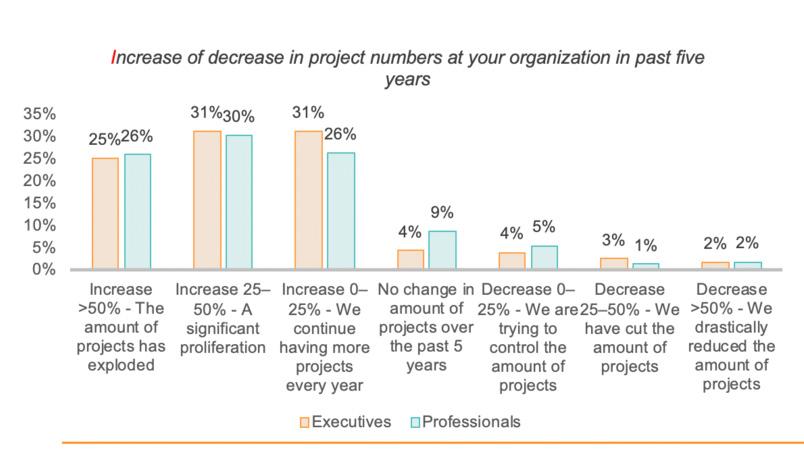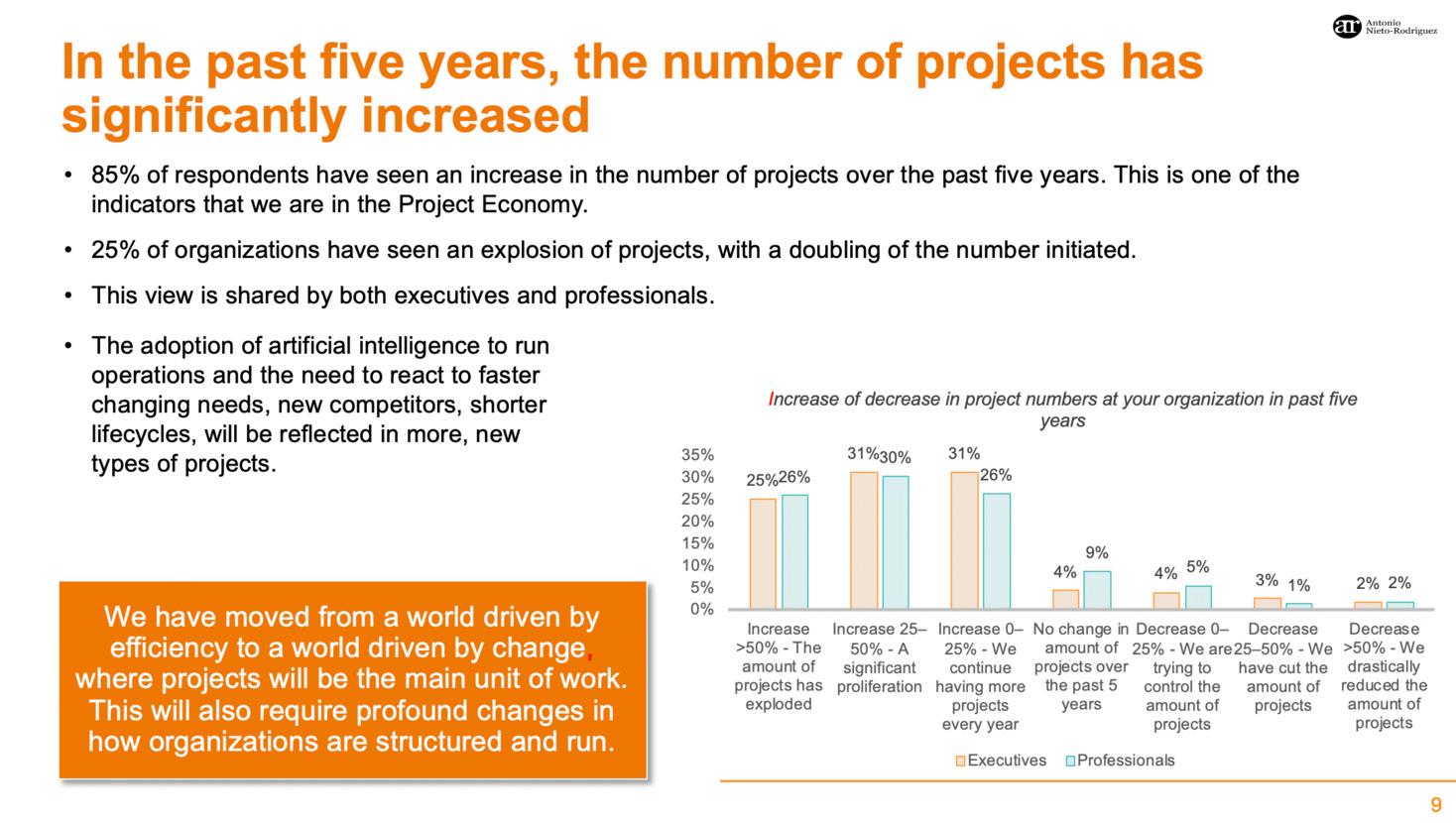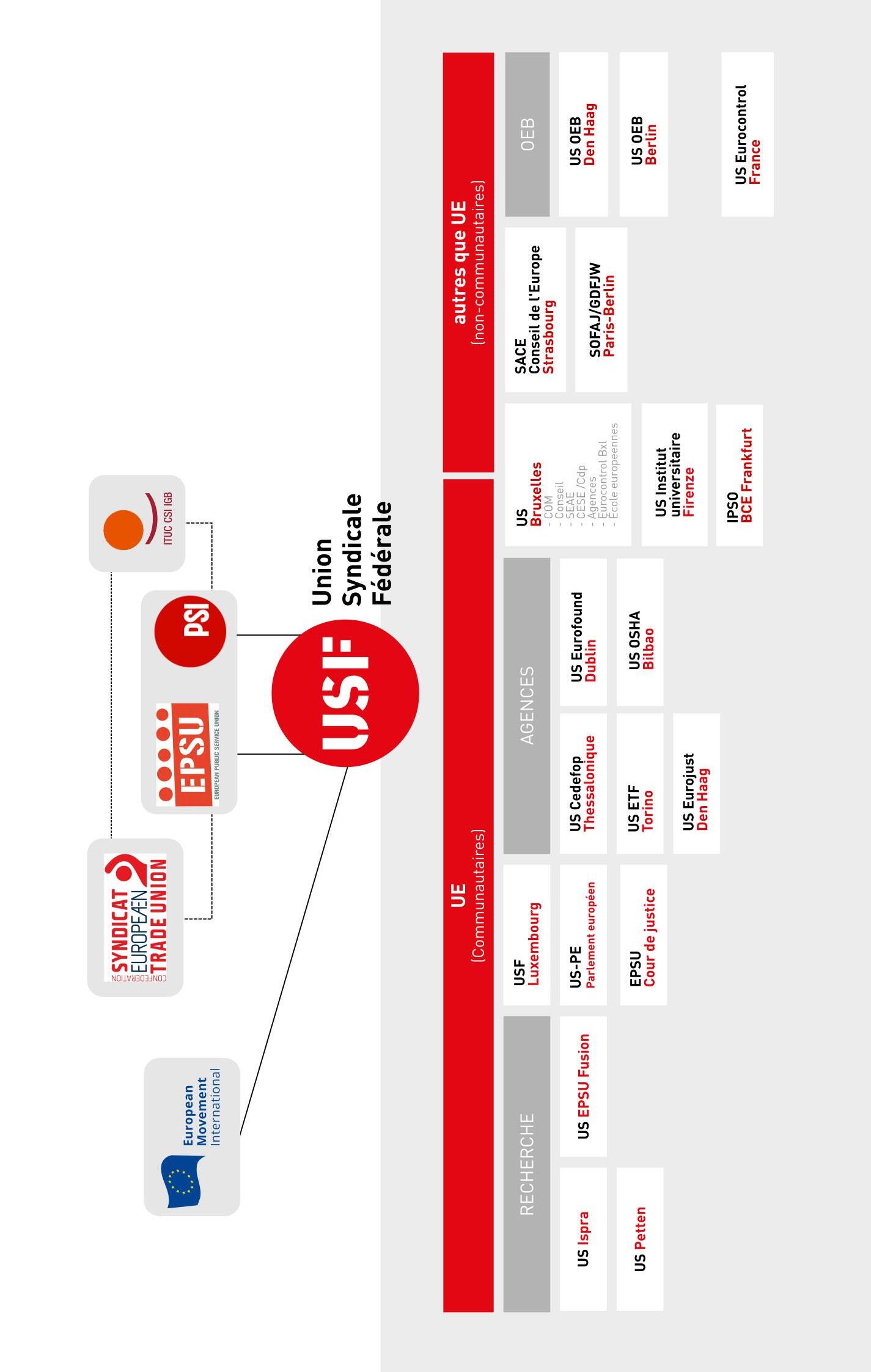








This edition of AGORA is dedicated to one of the crises that we are facing now: inflation.

Whether that inflation comes from the unprecedented conflict with the invasion of Ukraine by Russia, or covid, or whatever, the consequences are well known: life gets harder for people. All of that happened while we are yet to face the climate crisis which becoming more and more imminent. We are in the middle of a colossal domino effect in full force.

Every day, media outlets around Europe are unceasing to voice people’s struggle, to cope with catastrophic energy bills, and the high rocketing price of basic human needs such as food, water, clothing, sleep, and shelter. People are screaming about their frozen wages while their managers are asking for their understanding, for their patients. But at the same time, their superiors cannot promise better conditions. Inflation is no more a level of economic growth, but has as main effect to make people poorer. Within our European institution, inflation hits first the numerous low salaries, provoking a real and absolute pauperization.
And where are we, The Union Syndicale, in the middle of this mess? Since the foundation of our Union in 1974, (during another crisis), we realize that trade union action will always be difficult. But admittedly we are an essential part of the European Union as we aim at improving
the main actors of European construction: the staff. We are essential to compensate for the shortcomings of structures which are less and less able to solve the challenges of our time, whether structural (concentration of capital and development of multinational companies) or cyclical (energy crisis and economic).
We believe that we can achieve anything by establishing a dialogue, enabling all of us to understand each other’s problems better and find ways to resolve them. Of course, it will not be an easy road. From the origin of inflation to the worker’s problem which links to the climate and energy crisis and everything in between are all linked to one another. We have to understand that all of the crisis that we are facing today is not simple question-and-answer game such as which come first, chicken or eggs.
This edition of AGORA is trying to map out the problems that we are facing today in order for us to understand where should we start.
NICOLAS MAVRAGANIS President of USFThis article provides an ECB staff union perspective on ECB´s wage moderation stance and how the perceived risk of wageprice spiral is weighing on monetary policy decisions and inflation management. It argues that such a stance is not underpinned by ECB´s own research and reveals a bias against workers, which is contributing to the fuelling of inequalities. Instead of rejecting them, the ECB should embrace the value of collective bargaining, workers´ participation mechanisms, and more generally democracy at work.
The high level of inflation reached in the Euro area in 20225 times European Central Bank´s inflation target of 2% - would never have been deemed possible since the creation of the ECB. Still, it is there, and all workers in Europe are paying a heavy price, with wage increases being typically much below what is necessary to compensate for the high inflation (roughly half of it). ECB staff are of course impacted, losing about 6% of purchasing power over the last two years, with significant side effects on our pensions as well.1
1 ECB staff pensions are computed based on past salaries. In order to correct for inflation, those individual salaries are not revalued by the HICP but by ECB staff General Salary Adjustment. Therefore, a loss of purchasing power in one year will reduce the value of all the acquired years. For a 35 years long career, a 6% loss of purchasing power in one year brings a pension cut of ca. 5.4% (and not only 0.17%= 6%/35 as one might intuitively think). The damage is therefore quite severe.
How come that the ECB could not protect its own staff from the high inflation? First, it is not a secret that the high inflation was not anticipated by the ECB, who even publicly stated that it would be only temporary – and therefore called upon its staff to show some patience. One year later, inflation increased further to 10% and it became obvious that the purchasing power losses were indeed, not only substantial but also of a more permanent nature.
Are we not, however, supposed to be protected by a salary increase methodology, like all European civil servants? As Germans would say, the answer is “Jein” – a contraction of Yes and No. We do have a methodology, the so-called General Salary Adjustment (GSA) methodology, which is based on the average salary increase of our comparators - mainly the National Central Banks (NCBs) in the Euro area who own the ECB. But the methodology is not protective enough, because it suffers from many flaws in its design and implementation. NCBs are competing with the ECB on labour markets and are therefore placed in a conflict of interest – the higher the figure

they input into the GSA, the higher the disadvantage they face, when hiring specific talents hesitating between NCBs or the ECB. More fundamentally, most Euro area central banks are on a downsizing trend – a natural consequence of European consolidation. This means that they do not have great incentives to treat their own staff well. Contrary to La Méthode used at the EU Commission, the GSA methodology is asymmetric (outcomes can be cut if too high but not topped up if too low), somewhat arbitrary (the criteria for cutting – an outcome not in line with wage “moderation” – is undefined). It does not provide for retroactive payments (meaning that even when the GSA equates inflation, ECB staff nevertheless loses because the adjustment comes with a lag).
Beyond this, we regularly face implementation issues which sometimes go against common sense. For instance, the salary of one comparator (the Bank of International Settlement) is expressed in Swiss Francs. One would expect that such figures would be converted in Euro to compute an average increase in Euro. But the ECB refused to make this conversion, literally adding apples and pears. This conceptual mistake means that ECB staff salary are 3% lower than what they should be. Coming from the lender of last resort of the Euro area, such a conceptual mistake is not helping building confidence in the system. In fact, in a recent survey carried out by IPSO, 40% of respondents reported either “low trust” or “no trust” in ECB´s leadership, with an additional 34% reporting that trust was only “moderate”. Only 14% of respondents reported “high trust”, admittedly a very low figure.2
So far, our GSA methodology could more or less track inflation over the long-term, but not productivity growth (which, according to economic theory, should also be captured by wage growth). The link with inflation holds for the period of low inflation experienced since the ECB inception. It is however not clear if there will be a catch-up effect once the inflation wave has passed (which according to ECB´s own projection should not happen before 2025). For the time being ECB workers lose a substantial amount of purchasing power, and we have no guarantee that next year will be better. This is captured in our aforementioned survey, where 63% of the respondents showed concerns about ECB´s capacity to protect their purchasing power. This finding incidentally shows that the incapacity of the ECB to protect its own staff against inflation development is inevitably damaging ECB´s own credibility. If ECB staff is concerned, why should European citizens not be?
For an ECB staff, this situation nevertheless creates two paradoxes; First, our job was to keep inflation under control, therefore why should we be compensated when we have essentially failed to deliver on our mission? Second, given the official ECB stance in favour of wage moderation to minimize the risk of a wage-price spiral, should we not behave in line with what we preach and merely accept the purchasing power losses?
Answering these difficult questions for us, as ECB tradeunionists, is in our view a good way to dig into the matter at stake.
Let´s first start with ECB´s wage-moderation stance. It usually comes with a worry for potential second round effects and the risk of triggering a wage-price spiral. It is also flanked with an anti-indexation stance and a call for reducing the collective bargaining of workers, to reduce the risk of excessive wage growth.
Turning first to indexation mechanisms, the matter has become a taboo. That indexation cause prejudice is not something open for discussion. In all fairness, this is not only a view which is held by central bankers but also by many economists. Since the oil price shock in the 70´s, the common view is that indexation mechanisms have contributed to an automatic acceleration of wages, thereby resulting into a wage-price spiral which could only be stopped at the cost of very high interest rates. This sequence of events might well be historically true, but it should not be a reason to blindly reject one tool without considering the function it was fulfilling.
Indeed, there are some economic arguments in favour of indexation. For instance, a renowned economist such as Milton Friedman was supporting indexation because it saw it as a mechanism which would prevent monetary authorities to play with the monetary illusion. With all nominal variables automatically adjusting, only real variables would matter. In a different vein, one important advantage of indexation is that it helped reduce the level of social conflicts to achieve stability of the labour, share in value-added, a desirable outcome from a macro-economic perspective. No need for yearly strikes to have wages catching up with inflation, the matter is sorted out automatically. In fact, such indexation schemes worked perfectly well after the second world war, and were the basis of a shared prosperity model until the 1970s. Therefore, if one now decides to reject indexation as a wage adjustment mechanism, it is necessary to explain which other mechanism should be used to perform a similar function, that is achieving a fair distribution of value added between labour and profit without resorting to permanent social conflicts.
Let´s recognise that such an automatic catch-up might not be feasible in the short-run, because of an external price shock damaging the terms of trade. Higher prices for oil need to be financed by someone: either the employees/consumers, or the firm via reduced profit margins, or the future generation via government intervention and public debt. This scenario is no surprise. It was already foreseen by Philips in his 1958 seminal paper which formed the basis of the famous Philips curve. Yet, this does not mean that no indexation should take place. There are ways to amend the indexation formula, for instance excluding energy prices as Belgium does. Coordination at the national level involving both the employees and employers’ representatives could take place to negotiate and agree on the fair amount of indexation to apply.
Turning back to the ECB itself, and contrary to its antiindexation stance, it does in fact resort to an indexation mechanism (the GSA) and it is not willing to drop the principle that wages increase should be set according to some objective methodology. This methodology was however unilaterally decided instead of negotiated, which explains why the outcome is not so protective, whereas the existence of a methodology provides an easy excuse for the ECB to reject the taking place of negotiations.
In reality, fifty years after the first oil price shock, indexation mechanisms remain widespread in the euro area economy, for instance for adjusting minimum wages or to guide wage negotiations. Indexation is a useful tool for all sort of contracts, beyond labour contracts. Every landlord who forgot to add an indexation clause in their rental contract knows how costly this omission can become after a few years have passed, even endangering the market value of their asset. Leaving the adjustment to a yearly negotiation with the tenant means yearly conflicts down the road. Similarly, energy companies who forgot to add a possibility to adjust their price upwards in case of a higher input cost are bound to go bankrupt. If one has an honest look around most of the contracts prevailing in the economy, one realises indexation is still everywhere. This is because it performs a useful function.

In any case, assuming that indexation would not be the way to go, there should be a mechanism allowing for wage adjustments. Otherwise real wages will naturally be driven to zero. This is where negotiations kick in. The issue with negotiation as a mechanism to distribute value added between workers and capital holders is that its success relies on the underlying bargaining power of workers. Unless workers face
an altruistic employer, employers will generally try to retain as big as possible a share in the value added. Therefore, to secure bargaining power, workers need to engage into some form of social conflicts.
This is where the ECB also intervened. Internally, the ECB made it clear towards its staff that its rejects collective bargaining, even if this is a fundamental right granted by the EU Charter (Article 28). Externally, the ECB has been supporting policies aiming at reducing the bargaining power of unions, with a view to drive wage demands down; such as call for decentralisation of collective bargaining and call for reducing employment protection. All embedded in the neo-liberal European structural reform agenda.
At first sight, decentralised collective bargaining might look like a good way to ensure that wage conditions reflect local production constraints. On a closer look, this merely enables working conditions to become a parameter in the competition between firms. Firms offering better conditions than others in the same industrial sector would become less competitive and bound to disappear/downsize. Then, employees are placed in front of a trade-off where they have to either accept a reduction in their conditions (and in particular, their salaries), or face the risk of losing their jobs. Similarly, making dismissals easier strongly reduces the bargaining power of workers. An effect known since Karl Marx who flagged that the mass of unemployed persons was serving as reserve army of workers for employers, adding downward pressure on wages. This concept was later formalised by economists into the so-called NAIRU or NAWRU (non-accelerating inflation/wage rate of unemployment).
All in all, ECB stance both advises against indexation and against collective bargaining. Under this setting, workers are bound to be the one paying for the external price shock, without even allowing for a collective discussion on a socially fair level of burden sharing.

This anti-worker bias mechanically shows up in the wage moderation stance. Very recently, the Vice-President of the ECB called for unions to moderate their wage demands, which should not be excessive to avoid a wage-price spiral.3 En passant, it is worthwhile noting that an institution which has been granted clear tools to control inflation, in particular the main refinancing interest rate, makes a clear choice to go beyond such tools and enter into the social domain in order to instruct social partners to follow a particular course of action. It is also worthwhile flagging that such recommendations are only made towards one party, that is workers representatives, whereas the profit margin behaviours which are obviously also a possible inflation driver are not even addressed.
In any case, such a wage moderation guidance is not accompanied by a clarification regarding what should be considered as excessive and what should not. If there is an excessive wage demand, there must be a non-excessive one, that is one which would not fuel a wage-price spiral and could therefore be granted to workers. Such a benchmark, which should be based on an underlying assessment of ECB´s optimal labour share, is however not provided, and the guidance therefore conveys the impression that the lower the wage increases, the better it will be for the ECB. The ECB however works for European Citizens, most of whom are workers. They suffered a lot from the high inflation and deserve that this suffering is reduced as much as possible, based on economic possibilities. Asking them to maximize their loss as a way to minimize the risk that the ECB misses its inflation target is not the socially optimal path to take. Eventually, this is contributing to the fuelling of social inequalities.
3 Agence France Press, “ECB warns unions against ‘excessive’ pay demands” (02/08/2023)
Turning now to empirical evidence, according to ECB´s own research, no labour market indicators proved to be significant in terms of projecting inflation developments.4 Furthermore, in the same research, wage developments are at best a lagging or coincident indicator of inflation – and therefore not driving it. In another occasional paper, some other ECB researchers state, “Labour cost developments are an important element in price setting, but empirically so far only a loose link between wage growth and consumer price inflation has been documented”5 In the same vein, quoting the ECB Bulleting “Second-round effects played a major role in the transmission of oil supply shocks to inflation in the 1970s and 1980s, but these have been largely absent on average in the period since the euro was launched.”6
Furthermore, it is largely possible to allow for a wage catch-up without triggering a wage-price spiral, depending on labourmarket tightness and productivity development. As stated in a recent research recently published by the IMF: “an acceleration of nominal wages is not necessarily a sign that a wage-price spiral is taking hold.”7 Speaking of the current developments (we underline): “Sustained wage-price acceleration is hard to find when looking at episodes similar to today, where real wages have significantly fallen. In those cases, nominal wages tended to catch up to inflation, to partially recover real wage losses, and growth rates tended to stabilise at a higher level than before the initial acceleration happened. Wage growth rates eventually became consistent with inflation and labour market tightness. This mechanism did not appear to lead to persistent acceleration dynamics that can be characterised as a wage-price spiral.“ In fact, the previously quoted ECB research stated that “the link between wage growth and inflation is stronger when demand shocks are more prevalent than supply shocks”8. The current high inflation being driven by a supply shock, ECB´s own research finding is not backing the view that a wage-price spiral is to be feared.
All in all, a closer look at the available factual evidence, be it ECB´s own research or IMF´s, one does not support the wage moderation stance. One might even wonder why official communications are putting so much emphasis on this risk, whereas ECB´s own research is pointing to a different message?
4 Gabe J. de Bondt, Elke Hahn, Zivile Zekaite, ALICE: A new inflation monitoring tool , ECB Working paper 2175 September 2018
5 Gerrit Koester, Eliza Lis, Christiane Nickel, Chiara Osbat, Frank Smets Understanding low inflation in the euro area from 2013 to 2019: cyclical and structural driversECB Occasional Paper Series No 280 / September 2021, Box 7 page 49
6 “Wage share dynamics and second-round effects on inflation after energy price surges in the 1970s and today”, Prepared by Niccolò Battistini, Helen Grapow, Elke Hahn and Michel Soudan, Published as part of the ECB Economic Bulletin, Issue 5/2022.
7 “Wage-price spirals: The historical evidence”, Alexandre Sollaci Evgenia Pugacheva Youyou Huang Niels-Jakob Hansen John Bluedorn Jorge Alvarez / 30 Nov 2022.
8 Reference in footnote 5, page 49.
In fact, one could argue that the wage moderation stance was at the root of some monetary policy mistakes. For instance, the ECB decided to increase its interest rate in June 2008, by concern that second round effects would develop into a wageprice spiral. It was just two months before Lehman brothers collapsed and when Europe was facing the biggest deflation risk since the 1930s! Symmetrically, the ECB as well as many economists wondered about the muted reaction of wages to economic growth in the last decade. It was labelled the so-called “missing inflation puzzle”. Strangely, all sorts of potential factors were looked into,9 yet the deconstruction of trade union bargaining power was not seriously investigated. The role of trade union is unfortunately a blind-spot of central banking research, even when there is academic research showing they can play a useful economic role – for instance in ensuring workers are paid an efficiency wage.

Yet, assuming that a wage-price spiral could be a real risk. How can one argue against sound negotiation and workers participation procedures? In fact, the German model of Mitbestimmung gained worldwide recognition because it enables employers and employees to make joint decisions,
which ensure the prosperity of both parties. When the Chair of the Works council has the power to dismiss the CEO (as recently happened for Volkswagen), workers are in a capacity to make sacrifices in the short-term, because they know that they will have the capacity to recoup their loss in the mediumterm.
Unfortunately, our own internal experience is that the ECB is entirely opposed to such participation mechanisms and more generally democracy at work. The independence it was granted by the Treaty is used by the ECB to deviate from the standards of the European Social Contract. The ECB rejects collective bargaining, negotiation, or participation mechanisms such as Joint Committees (like the ones in place at the EU Commission, for instance). The ECB rejects the applicability of ILO conventions, arguing that they are only binding EU Member States and that the ECB is not a Member State. ECB staff therefore finds themselves facing an all-mighty employer, empowered with a legislative competence, which gives them very little chance to seek redress in court.10 This is creating operational difficulties, such as discouraging colleagues to speak up, which can have potentially severe damaging effects including the missing of the next crisis.11
10 This is because the ECJ´s main role will be to determine if the ECB complied with rules it has itself decided. In practice, 72% of the court cases made against the ECB are lost by the ECB staff. See C. Bowles & J. Dufour, “Independence institutionnelle, concentration des pouvoirs et changements administratifs à la Banque Centrale Européenne”, Revue Francaise d´Administration Publique, 2021/4 N. 180 pages 1033 à 1056.
11 See the author´s speaking notes for the ECON Hearing that took place on 26 October 2016. https://www.ipso.de/documents/2016-10-26(CBtoECON) EPhearing-CBspeakingnotes.pdf. See also the related press report Reuters, F. Canepa “ECB ‘groupthink’ raises risk of missing next crisis - staff representatives”, 26 October 2016 (available here)
It is worthwhile flagging that the European Commission follows a more balanced approach. In the 2022 edition of its Annual Review of Labour Market and Wage Developments in Europe,12 for instance, the European Commission is trying to assess to what extent it is possible to allow for wages to catch-up without triggering a wage-price spiral. This is a completely different attitude than the one shown by the ECB, which warns against excessive wage growth without even indicating which growth would be excessive and which wouldn´t. The EU Commission is at least trying to maximize workers´ income.
Similarly, the European Commission is not rejecting collective bargaining and trade unions like the ECB do. The above report contains a full chapter advocating for the fostering of collective bargaining, explaining how this can be helpful to protect workers and also serve as useful wage coordination device.

This situation is unfortunate, but it will help us answer to the first question we asked: the ECB decision-makers and the ECB staff union are two different entities. The ECB staff union is of course not bound by ECB decision-makers own choices and
12 https://ec.europa.eu/social/main.jsp?catId=738&langId=en&pubId=8508& furtherPubs=yes

stance. Even more so, when we believe that the choices made regarding ECB´s own organisation, staff relations or trade union matters are mistaken, our duty should be to speak up.
In our views, workers should not be the ones paying in full for the burden of the exogenous price shock. A fair deal must be negotiated at the ECB level and Europe-wide. That is why we do call all workers to steep up their wage demand and, in line with our own stance, also maintain that it is not up to ECB workers to pay the price of decisions, made by decisionmakers, who never asked for their consent in the first place.
Carlos Bowles joined the ECB as a macro-economic forecaster in 2003. He earned his PhD in Economics at the European University Institute. He is currently chairing the ECB Staff Committee and also serves as IPSO´s Vice-President. This article is written in his trade-union capacity.

This short paper does not pretend to be an academic paper. It is about some basic reflections of a union/staff representative concerning salaries and inflation.
Inflation, an “I word” and a scourge for many economists, bankers, and finance ministers, is often used as an alibi to contain and reduce salaries in real terms. While it is undeniable that high inflation may have a destabilizing impact on the economy, and ultimately on the job market, it is not generally proven that salaries adjustments to inflation will automatically generate an inflationist spiral1. Moderate inflation, on the other hand, may be good for the economy2, being a bulwark against the risk of deflation, an even worse devil. A smooth salary adjustment to inflation could be beneficial to keeping stability in both cases, as even if it does not always benefit financial stability it can at least benefit social and political stability.
In a world where communication is king, the choice of words is important. How many times do we hear “salary increase” instead of “salary adjustment” in the context of inflation? “Increase” and “adjustment” are not synonyms, “increase” implies “growth”, while “adjustment” indicates adaptation to something. The choice of the one or the other is not trivial. Unsurprisingly, employers

have the tendency to say, “salary increase”. This triggers an epidermic reaction in the inattentive reader/listener, be it a shareholder, a manager, or the general public. Such a reaction is linked to the false perception that some special efforts are made by the employer, and that the employees get some undue benefits out of a situation (inflation) where the majority of the people tighten their belts. In the case of international organisations, many national politicians are keen to jump on the opportunity to get more popular votes by bashing international civil servants and their institutions - an extremely popular activity these days.
To say “salary increase” instead of “salary adjustment” in the context of inflation is misleading and etymologically a nonsense. As it is well known the term salary comes from the Latin “salarium”, an allowance legionaries received to buy a certain amount of salt. In a period of inflation, the amount of salt they were entitled to, remained the same. In other words, the “salarium” automatically adjusted to inflation (assuming of course that the price of salt followed the inflation’s basket). Ancient Romans were very pragmatic people! Two thousand years have elapsed since then, but inflation still exists and is there to remain in the future. Since the meaning of salary has evolved, it has lost its original salty connotation and has become a synonym of wage, which is an amount of money paid for a specific quantity of work. The terms nominal and real wage/salary have been coined. While saying “nominal salary/wage increase” is technically correct when speaking about adjustment to inflation, the expression is still misleading, since its correctness is linked to the qualificative “nominal”, which has the annoying tendency to disappear in summaries or newspapers articles. On the other hand,
“real salary/wage” decreases most of the time, at least during a certain period, when there is an adjustment to inflation, due to the delays inherent to the adjustment procedures. So, with a pinch of salt, next time your manager asks you to work more because your (nominal) salary has increased to adjust to inflation, tell them you will work less to adjust, to the decrease of your (real) salary!

This mantra is so often repeated that it has permeated our collective subconscious. It is easy to state and even easier to apply. No need to demonstrate it nor to check if it applies to the specific situation, it is a self-evident truth. Or is it? Well, some economists tend to disagree3
First of all, salary adjustments are always delayed compared to present inflation. The delay in general can amount from 6 months to one year. The inflation rate used to compute the adjustment being the consolidated inflation rate of the previous year (e.g., the weighted average of some countries inflation rate from July to June of the previous year in the EU method). Furthermore, in case of high inflation, there are sometimes some mechanisms (e.g., the moderation clause) that further delay the adjustment. It would appear therefore that due to these delays, salary adjustments in general, cannot be the drivers of inflation. They may however have an indirect and secondary effect on it on the long run.
Secondly, the effects of salary adjustments on inflation and economy in general may be very different according to circumstances. If the main drivers of inflation are aggregate demand or excessive consumption, the impact of salary adjustments on inflation is obviously higher than if the main drivers are supply side shortages, external factors (war), or pandemic-induced reasons, as in the present inflationary surge. It is important to always make a detailed analysis of the roots of inflation, in order to be in measure of assessing the possible effects of salary adjustments on inflation. In some circumstances, like the present ones, proper salary adjustments may have a positive and stabilising effect on inflation and economy.
A good salary adjustment method should allow for a smooth and continuous adjustment of salaries. Erratic changes of the salaries, with long periods of no-adjustments followed by sudden adjustments may have the tendency to introduce instability in the economy and may generate surges of inflation. Furthermore, after an extended period of no-adjustments the due adjustments become quite huge, and it could be difficult to have them accepted and voted by the governing bodies of the organisations. We had a similar issue at the European Patent Office at the end of last year. For short term financial reasons, some managements try to delay the adjustments of salaries and try to promote salary adjustment procedures that produce delaying effect. It is up to the Staff representation, and to the unions to stress the importance of a continuous and smooth adjustment of the salaries, in the interest of the employees and the organisation alike. In cases of high inflation as it was the case in 2022, an intermediate adjustment will allow a smoother adjustment process.
Financial stability and limitation of inflation are surely important, but social, labour and political stability in our democracies is even more important. In some circumstances, proper salary adjustment may contribute to enhance stability.
The main scopes of our financial institutions, particularly that of the European Central Bank, is to keep prices stable and limit inflation below a certain threshold. It seems, however, that the approach is sometimes too strict and mechanical, with too much attention being given to the compliance of fixed arbitrary thresholds (e.g., the ECB 2% inflation rate). These arbitrary thresholds should be interpreted as indicative aims, based on empirical experience, to keep inflation at a moderate level. More flexibility should be allowed according to circumstances, particularly in special cases like in the past three years (COVID, war in Ukraine). Again, a proper and detailed evaluation of the reasons of the inflation should be made before (and instead of) blindly applying the old and known easy recipes, in particular blocking wages or unduly delaying salary adjustments. Other mechanisms may be
available, and be more appropriate to restore stability. A salary adjustment well suited for the circumstances may help avoiding recession or deflation tendencies after an (high) inflationary period.
Finally, as unions, we should care about the stability from the employee’s viewpoint. Stability is important for the staff wellbeing, and this will also benefit the organisation on the long term. Proper salary adjustments in times of inflation will guarantee that staff may continue to live as planned and avoid unexpected and stressful financial situations.

“Solidarity is our Cup of Tea” is one of the mottos of SUEPO and solidarity is certainly one of the core values of all unions.
When speaking about the adjustments of salary to inflation, we should not forget that the impact of inflation is much worse for the employees and workers that have lower salaries. While inflation impacts everyone, the price increases in essential products, disproportionally impacts staff with lower salaries. It is therefore important to support them and have appropriate mechanisms in that respect. A solution for staff with lower salaries could be to reduce the delay in time between inflation and their salary adjustment, or to have a number of intermediate adjustments during the year. If the inflation is not driven by the price increase of essential products, this proposed mechanism will only have secondary and marginal effects on inflation, if at all. Other mechanisms can also be envisaged. In any case, solidarity with employees having lower salaries in these circumstances is a moral duty that comes before financial considerations, except if the financial impact of it has a clear destabilising and deleterious effect on the economy, and ultimately on the staff itself.,

It is evident from all the above that a comprehensive approach should be followed, considering all pertinent aspects. First, a detailed analysis of the reasons for inflation should be made, in order to identify the main drivers of it and act on them accordingly to curb the inflation. No mantras, no seemingly easy and one size fits all solutions. Secondly, salary adjustment procedures that are just, smooth, and continuous over time, need to be devised to avoid erratic developments. Thirdly, keep stability in mind, and remember that it is not only restricted to economic/financial stability, but also includes social, labour, and political stability, not to forget the employees’ stability and wellbeing. Finally, do not forget solidarity, so dear to us, which is the backbone of human society.
The approach should be comprehensive, not only in its methods, but also in its means and actors. All stakeholders (States, EU, ECB, Organisations/ companies, Staff representation, Unions) should have their say, contribute, and cooperate. Only so can a workable and satisfactory solution for all, particularly for the employees, be reached.

Member of USF Federal Bureau
And Member and Secretary of SUEPO TH
Le changement climatique est en œuvre, et ses conséquences deviennent réelles (et s’aggravent) pour chaque citoyen et chaque travailleur. La crise écologique et climatique est probablement le plus grand défi auquel l’humanité ait été confrontée dans l’histoire. Elle exige de nos sociétés qu’elles démontrent leur capacité à changer, et à s’adapter à tous les égards, qu’il s’agisse de nos déplacements, de notre alimentation, de notre lieu de vie, ou de notre façon de travailler. L’Union Syndicale Fédérale n’est pas indifférente face à une telle menace sociétale. A l’Union Syndicale, nous pensons que nous pouvons contribuer à identifier et favoriser les solutions les plus viables pour que, dans la transition écologique, l’emploi et la qualité du travail, ainsi que le bienêtre des travailleurs, soient préservés et améliorés. Nous sommes également conscients que la transition peut aussi avoir des répercussions défavorables sur l’environnement et le bien-être des travailleurs. C’est l’une des raisons pour lesquelles ce sujet sera l’une de nos résolutions pour le prochain Congrès de l’USF en mai.
Le paquet “Fit for 55” est donc proposé à un moment crucial, et en cohérence avec les préoccupations de l’Union Syndicale
concernant le complexe processus d’adaptation pour faire face au changement climatique. Ce paquet est une proposition législative de la Commission européenne, qui vise à aligner les politiques européennes en matière de climat et d’énergie sur les nouveaux objectifs climatiques, fixés par la loi sur le climat récemment adoptée. À savoir, une réduction des émissions de gaz à effet de serre d’au moins 55% d’ici 2030 et la neutralité climatique d’ici 2050. Bien que la Confédération européenne des syndicats (CES) soutienne le paquet pour des raisons évidentes, elle n’hésite pas à souligner le fait que les propositions auront des conséquences socio-économiques importantes et qu’elles doivent être prises en compte.
En conséquence, l’Union Syndicale, aux côtés de la CES, vous présente une série de textes en lien avec la résolution de l’Union Syndicale qui encourage l’utilisation du dialogue social et de la négociation collective pour atteindre l’ambition climatique de l’UE. En nous appuyant sur notre conviction, nous devons agir ensemble, sensibiliser et nous préparer à faire face aux conséquences de l’impact du changement climatique.


Le 15 décembre, la Commission européenne a présenté un complément de "Fit For 55" propositions, dont un paquet “énergie, climat et protection de la nature”, et la révision de la directive sur la performance énergétique des bâtiments. Par rapport à la publication de la première partie du paquet en juillet, le contexte socio-économique et politique a considérablement changé. La COP26 a souligné l’importance de présenter des propositions socialement justes et ambitieuses sur le plan climatique à un moment où la limite critique d’une augmentation de la température de 1,5 °C semble s’éloigner. Les hausses des prix de l’énergie qui touchent durement les citoyens européens ont attiré l’attention sur les effets sociaux de la transition énergétique, même s’ils ne sont pas directement liés aux efforts de décarbonisation. La deuxième partie du paquet “Fit for 55” a également été considérée comme une occasion d’atténuer ces préoccupations et d’accélérer en même temps une transition verte et juste.
La Commission propose de refondre les règles actuelles du marché du gaz, qui sont principalement axées sur le gaz naturel, afin de couvrir également les gaz renouvelables et à faible émission de carbone, ainsi que l’hydrogène. Il s’agit d’un règlement et d’une directive sur les marchés intérieurs des gaz renouvelables et naturels et de l’hydrogène, avec de nouvelles définitions des gaz renouvelables et à faible teneur en carbone (y compris l’hydrogène), leur certification et des règles communes pour la distribution des gaz renouvelables et à faible teneur en carbone dans l’infrastructure gazière existante.
Compte tenu de l’importance de la production et du transport d’hydrogène dans plusieurs secteurs économiques, de nouvelles règles pour les réseaux dédiés à l’hydrogène font également partie de la proposition, y compris des règles ajustées concernant le dégroupage, l’accès des tiers et les tarifs. Comme l’a fait remarquer le groupe de réflexion 3GE, le paquet devrait éviter toute référence au mélange d’hydrogène et de gaz fossile, ce qui risquerait de soutenir une utilisation
inefficace de l’hydrogène qui ne devrait être destiné qu’à des utilisations finales décarbonées lorsqu’il n’existe pas d’autres solutions.
En ce qui concerne la sécurité de l’approvisionnement en gaz, la Commission propose différentes mesures pour renforcer la coopération et la résilience, y compris un système d’achat conjoint volontaire pour les gestionnaires de réseaux de transport, incluant le stockage et leur propriété dans les évaluations nationales des risques.
Afin de réduire les émissions de méthane provenant des énergies fossiles produites ou consommées dans l’Union, la proposition de règlement de la Commission sur la réduction des émissions de méthane prévoit l’obligation pour les exploitants d’installations pétrolières, gazières et houillères d’évaluer et de déclarer régulièrement les émissions de méthane de leurs installations, ainsi que de détecter et de réparer les fuites.
Avec la proposition de recodification de la directive sur la performance énergétique des bâtiments, la Commission vise à augmenter les taux de rénovation des bâtiments, notamment en fixant des normes minimales de performance énergétique pour les bâtiments existants et en obligeant les États membres à présenter régulièrement des plans d’action nationaux pour la rénovation des bâtiments. L’obligation d’équiper les chantiers de stations de recharge pour les véhicules électriques sera renforcée.
Outre les propositions “Fit for 55”, la Commission a également publié le 14 décembre 2021, dans le cadre du Green Deal, une communication sur les cycles durables du carbone, une proposition de directive sur les crimes environnementaux ainsi qu’une proposition de recommandation du Conseil visant à assurer une transition équitable vers la neutralité climatique.

Les propositions présentées seront alignées sur les lignes directrices révisées relatives aux aides en faveur du climat, de l’énergie et de l’environnement (CEEAG) et sur le règlement relatif à la taxonomie.
Adoptée lors de la réunion du Comité exécutif de la CES des 8 et 9 décembre 2021, les syndicats soutiennent l’augmentation de l’ambition climatique proposée dans le paquet et reconnaissent qu’elle est conforme à la nouvelle loi sur le climat.
La CES prévient que les conséquences sociales du paquet Fit for 55 seront importantes et ne doivent pas être négligées, en particulier pour les travailleurs des régions et des secteurs dépendant des activités liées aux combustibles fossiles qui subiront de profondes transformations. Par exemple, la réforme proposée du système d’échange de quotas d’émission ou l’interdiction de vendre de nouveaux véhicules à moteur à combustion d’ici 2035 auront un impact profond sur les industries concernées. Si rien n’est fait pour gérer et anticiper ces changements, les politiques climatiques auront un impact négatif sur les perspectives d’emploi dans de nombreuses régions et conduiront à la désindustrialisation.
La CES souligne également que la proposition de création d’un système d’échange de quotas d’émission distinct pour les combustibles de chauffage dans les bâtiments et les carburants pour les transports aura des effets distributifs fortement régressifs et affectera proportionnellement plus de ménages à faibles et moyens revenus. Alors que 50 millions de ménages européens souffrent déjà de pénurie d’énergie et dans le contexte actuel de forte hausse des prix de l’énergie.
Pour répondre à ces préoccupations, la CES appelle la Commission européenne à proposer des mesures politiques supplémentaires pour renforcer la dimension sociale et du travail du Green Deal européen. Aujourd’hui, les propositions législatives de la Commission sont en effet conçues avec l’ambition d’atteindre l’objectif climatique de 2030 - ce qui est absolument nécessaire - mais ne contiennent pas de mesures visant à garantir une transition juste pour les travailleurs européens et les ménages à faibles revenus.
Pour être socialement acceptable, l’ambition climatique proposée dans le paquet devrait s’accompagner d’une ambition sociale équivalente, conformément aux récentes déclarations de Porto faites par le Conseil de l’UE et aux piliers européens des droits sociaux. L’agenda européen du Green Deal devrait en effet être utilisé comme une opportunité de maintenir et de créer des emplois de qualité, de promouvoir le travail décent dans tous les secteurs, d’améliorer les normes de travail, de lutter contre les discriminations au travail, de promouvoir l’égalité entre les hommes et les femmes et la démocratie sur le lieu de travail.
La CES appelle à l’adoption de mesures politiques pour rendre opérationnelles les lignes directrices de l’OIT pour une transition juste, adoptées en 2015. Concrètement, les syndicats européens appellent à l’adoption d’un cadre juridique pour la transition juste dans le cadre du Green Deal européen, pour accompagner le paquet Fit for 55.
La proposition de la Commission devrait aller au-delà de simples recommandations aux États membres et prendre
la forme de propositions législatives concrètes visant à renforcer le droit des travailleurs à l’information et à la consultation ainsi qu’à garantir la création d’emplois de qualité.
Le 1er décembre 2021, le comité exécutif d’IndustriAll Europe a conclu que “l’organisation soutient l’ambition d’atteindre la neutralité climatique d’ici 2050 si une transition juste est garantie et si les partenaires sociaux ont la possibilité d’anticiper d’éventuels changements perturbateurs pour les chaînes de valeur industrielles et les emplois qui y sont liés en Europe”.
Le syndicat affirme qu’avec la publication du paquet “Fit for 55”, la Commission européenne a finalement présenté un ensemble étendu et ambitieux de propositions visant à aligner la politique climatique de l’UE sur l’objectif de réduction des émissions pour 2030. IndustriAll Europe a adopté une prise de position sur le paquet qui affirme que ses membres considèrent que leur rôle est de s’assurer que les politiques climatiques ne mettent pas en péril les emplois et les conditions de travail et de vie des travailleurs de l’industrie. Ils souhaitent que le paquet “Fit for 55” et sa mise en œuvre stimulent l’investissement, créent des emplois de qualité, offrent des avantages sanitaires et environnementaux aux citoyens de l’UE, tout en s’efforçant de maintenir et de développer des chaînes de valeur industrielles fortes en Europe grâce à la promotion de l’innovation.
La position détaille donc les inquiétudes du syndicat quant à “l’insuffisance des outils et des ressources pour faire face aux conséquences de l’accélération de la décarbonisation” sur les travailleurs en Europe. Elle soulève également de sérieuses inquiétudes quant à l’impact sur le pouvoir d’achat, l’inflation, la pauvreté et l’emploi. Le syndicat s’inquiète également de l’impact que certaines propositions pourraient avoir sur les inégalités sociales, en particulier dans les régions les plus pauvres d’Europe.

La position d’industriAll Europe demande en outre
• un cadre juridique pour l’anticipation du changement par la participation des travailleurs

• une politique industrielle saine
• un régime mondial équitable fondé sur des règles du jeu équitables et sur la justice internationale
• la lutte contre la hausse des prix de l’énergie.
IndustriAll a également approuvé les prochaines étapes de sa campagne qui prévoient une série de tables rondes régionales sur la transition juste, l’adoption d’un manifeste sur la transition juste et un événement européen au printemps 2022.
 BELA GARGOCZI
BELA GARGOCZI
Chercheur principal à l’Institut syndical européen, à Bruxelles, depuis 2003, travaille sur la mobilité de la maind’œuvre et des capitaux dans l’UE. Ses recherches actuelles portent sur une transition juste vers une économie neutre en carbone, en particulier sur les transitions équitables du marché du travail dans les secteurs et les régions à forte intensité de carbone. Il est titulaire d’un diplôme d’ingénieur et d’un doctorat en économie. bgalgoczi@etui.org
Actuellement, à 8,1 % (par rapport à mai 2021), l’inflation est réapparue en Europe à des niveaux qui n’avaient pas été atteints depuis les années 1980. Comme le suggèrent les données récentes de la CBE, elle est actuellement alimentée principalement par la hausse des prix de l’énergie (où l’inflation était de 39,2 % par rapport à mai 2021), mais aussi par les prix des produits alimentaires non traités (9,1 %), deux répercussions directes de la guerre en Ukraine et des sanctions économiques que les pays occidentaux et d’autres États démocratiques ont imposées à la Russie.
L’inflation en général, et celle observée actuellement en particulier, a tendance à toucher plus fortement les ménages à faibles revenus, ce qui exacerbe l’inégalité des revenus pour deux raisons. L’inflation érode le pouvoir d’achat des revenus monétaires (tels que les salaires et les prestations sociales), et les ménages à plus faibles moyens tendent à dépendre davantage de ces revenus car ils ne possèdent pas (ou moins) d’autres types de biens sur lesquels s’appuyer. En outre, dans les circonstances actuelles, l’énergie et les produits alimentaires, en tant que produits de base, représentent une part relativement plus importante du budget des ménages à faibles revenus que du budget des ménages à revenus plus élevés ; par conséquent, les prix élevés exercent une pression relativement plus forte sur ces ménages à faibles revenus.
La guerre en Ukraine a donné une certaine impulsion à l’accélération de la transition écologique en Europe en réduisant notre dépendance au gaz naturel et au pétrole importés par la Russie. Toutefois, même si le contexte géopolitique devait évoluer pour aboutir à un accord de paix (durable) de manière spectaculaire et à une levée des sanctions, il est probable que nous soyons confrontés à de nouvelles hausses de l’inflation liées au changement climatique et aux actions visant à l’atténuer, avec des effets au moins en partie similaires à ceux que nous observons actuellement. Toutefois, comme l’a récemment déclaré Isabel Schnabel, membre du conseil des gouverneurs de la CBE, ces pointes d’inflation ont des sources distinctes.
Tout d’abord, les phénomènes météorologiques extrêmes (par exemple, les fortes pluies ou les vagues de chaleur) et les catastrophes naturelles auxquelles ils peuvent être liés (par exemple, les inondations, les sécheresses ou les incendies de forêt) peuvent détruire les récoltes ou les terres agricoles. Il en résulterait une baisse de l’offre de certaines substances alimentaires qui, compte tenu de la demande, entraînerait une hausse de l’inflation pour ces produits de base, ce que l’on peut

également appeler l' “inflation climatique”. Les études portant sur la manière dont de tels événements météorologiques affectent l’inflation sont plutôt rares.
Une étude récente menée par des chercheurs de la BCE s’est penchée plus spécifiquement sur les effets des températures extrêmement élevées sur l’inflation. Ils ont constaté que “l'inflation climatique” a un impact non négligeable sur l’inflation, même à moyen terme, qui est l’horizon temporel (généralement de 1 à 5 ans) sur lequel les banques centrales prennent en compte l’évolution de l’inflation pour décider de l’opportunité et de la manière d’ajuster leur politique monétaire, en particulier dans les économies émergentes (plus pauvres), mais pas autant dans les économies avancées. Cette différence entre les économies émergentes et les économies avancées peut s’expliquer par le fait que les produits alimentaires sont relativement plus importants dans le “panier de biens” utilisé pour calculer l’inflation dans les économies émergentes et par le fait que leur résistance aux risques naturels est relativement plus faible. Nous constatons donc que les températures extrêmement élevées ont un impact inégal sur l' “inflation climatique” (avec tout ce qu’elle implique) entre les économies émergentes et les économies avancées. Toutefois, les chercheurs ont averti que la fréquence accrue des épisodes de températures extrêmement élevées pourrait créer une “inflation climatique” même dans les économies avancées.

Deuxièmement, le prix des combustibles fossiles a augmenté (ce que l’on peut appeler l' “inflation fossile”) pour différentes raisons. Malgré les grandes déclarations, les énergies fossiles et le gaz naturel représentaient encore 85 % de l’utilisation totale d’énergie dans la zone euro en 2019. Par conséquent, l' “inflation fossile” a un impact important sur l’inflation générale. Différentes raisons expliquent cette “inflation fossile” : les politiques de tarification du carbone, qui visent à réduire la consommation de ces ressources afin d’atténuer le changement climatique, ou encore la réduction des investissements dans les énergies fossiles, qui réduit l’offre
alors même que la demande reste élevée. Enfin, le fait qu’il ne puisse y avoir que quelques fournisseurs de combustibles fossiles, ce qui donne lieu à un marché dit “oligopolistique”, a permis à ces entreprises d’augmenter les prix des énergies fossiles en contrôlant (c’est-à-dire en réduisant) l’offre et en créant des pénuries.
Troisièmement, le développement de nouvelles technologies vertes (par exemple, l’énergie éolienne) et de produits (par exemple, les voitures électriques) qui contribueraient à réduire les émissions de carbone et la dépendance à l’égard des combustibles fossiles repose sur des matériaux, tels que les minéraux et les métaux, dont l’offre (par le biais de l’exploitation minière) n’augmentera probablement pas au même rythme que la demande au cours de la prochaine décennie, alors que les pays du monde entier s’efforcent de respecter leurs engagements en matière de réduction des émissions de carbone. Il en résultera une “inflation verte”.
La présentation des types d’inflation susmentionnés et de leurs sources permet de tirer deux conclusions. Le fait que nous n’ayons pas encore réussi à nous libérer de notre dépendance à l’égard des combustibles fossiles nous coûtera une “inflation climatique” et une “inflation fossile” plus élevées. En revanche, l’accélération du processus de décarbonisation par le biais de technologies vertes innovantes est susceptible d’alimenter la “déflation verte”. Si cela permet de freiner l' “inflation fossile”, nous sommes néanmoins condamnés à vivre avec des phénomènes météorologiques extrêmes et la “climateflation” qu’ils provoquent pour les décennies à venir. L' “inflation fossile” et l' “inflation verte” suggèrent qu’à moins que des interventions politiques ne soient mises en place, les ménages aux revenus les plus faibles risquent d’être contraints de conserver l’énergie fournie par les combustibles fossiles, qui deviendra de plus en plus chère. Dans le même temps, des formes d’énergie plus durables pourraient également rester inabordables pour eux. Cela perpétuerait les inégalités et la pauvreté énergétique.

Une inflation élevée suscite le mécontentement de l’opinion publique, car les ménages ressentent la compression de leur budget. En Europe, la tâche de maintenir l’inflation à un niveau bas et stable est principalement confiée aux banques centrales, dont la CBE. Que signifient ces types d’inflation liés au changement climatique pour ses politiques ?
La “climateflation” et la “fossilflation”, semblables à la montée de l’inflation que nous connaissons actuellement, sont plus difficiles à combattre car, dans leur cas, les augmentations de prix vont de pair avec des risques de ralentissement de l’activité économique, voire de récession : des prix plus élevés, en particulier pour des produits de base tels que le carburant et les produits alimentaires, sont susceptibles de réduire la production et la consommation, car les coûts de production augmentent et les budgets des ménages sont de plus en plus consacrés à ces produits de base et non à d’autres. Par conséquent, la réaction conventionnelle de la politique monétaire consistant à augmenter les taux d’intérêt pour réduire l’inflation risque d’aggraver les effets négatifs de l’inflation sur la demande et la création d’emplois et d’accroître les inégalités car, pendant les récessions, les personnes en marge du marché du travail ont tendance à souffrir davantage en termes de chômage ou de précarité de l’emploi. En outre, la hausse des taux d’intérêt pour l’ensemble de l’économie nuirait aux investissements, notamment dans les énergies renouvelables et les nouvelles technologies vertes, perpétuant ainsi les causes des trois types d’inflation liés au changement climatique.
La lutte contre la “déflation verte” ne présente pas ces risques si une banque centrale augmente les taux d’intérêt pour l’enrayer. Le défi de la “déflation verte” est de savoir comment nous pouvons intensifier les investissements de manière à ce que l’offre de matériaux utilisés pour les nouvelles technologies et les nouveaux produits verts augmente plus rapidement et corresponde à la demande. La BCE peut influer sur les conditions de financement et, par conséquent, sur l’orientation des investissements vers ces activités de deux manières. Premièrement, dans le cadre de ses programmes (Assets Purchasing Programmes), en adoptant une approche plus active pour orienter ses achats vers les activités et les entreprises qui promeuvent l’investissement dans les nouvelles technologies et les nouveaux produits verts et en écartant celles qui ne contribuent pas aux objectifs de l’UE en matière de climat. Deuxièmement, dans le cadre de son dispositif de garantie, par lequel les banques déposent des valeurs financières de haute qualité comme garantie pour recevoir des liquidités de la BCE, en modifiant les règles déterminant quelles valeurs financières sont admissibles en faveur de celles qui financent des activités véritablement vertes et en limitant les conditions dans lesquelles les valeurs financières qui contribuent au changement climatique peuvent être admises.
La BCE a conclu la révision de sa stratégie de politique monétaire en juillet dernier. Sa nouvelle stratégie (qui sera réexaminée d’ici 2025) comprend un plan d’action visant à soutenir la lutte de l’UE contre le changement climatique. La première étape dans cette direction consiste à mieux comprendre comment le changement climatique, qu’il s’agisse d’événements météorologiques extrêmes, de politiques visant à accélérer la décarbonisation et de celles visant à développer de nouvelles
technologies vertes, affecte la croissance de la production et les prix, mais aussi comment il affecterait le système financier par l’intermédiaire duquel les politiques de la BCE ont un impact sur l’économie réelle. L’action de la BCE en matière de changement climatique contient des points sur l’adaptation des hypothèses et des modèles que la Banque utilise pour prévoir les évolutions macroéconomiques, sur la base desquelles ses décisions de politique économique sont prises, afin de mieux prendre en compte les effets du changement climatique et des politiques associées (par exemple, la tarification du carbone) sur ses prévisions.
En outre, dans sa nouvelle stratégie, la BCE s’est engagée à prendre plus activement en compte la durabilité environnementale des activités financées par les capitaux servant de garantie à ses opérations de crédit et/ou achetés dans le cadre des programmes d’achat d’actifs de la BCE, car elle a été confrontée à des critiques selon lesquelles ces opérations ont financé par des activités économiques qui renforcent plutôt qu’elles n’atténuent les activités défavorables au changement climatique. Bien qu’allant dans la bonne direction, ces engagements avaient été critiqués avant même que la guerre en Ukraine n’éclate, car ils étaient beaucoup trop modestes, compte tenu de l’urgence des objectifs climatiques de l’UE.
L’impact du changement climatique sur l’inflation est un sujet sur lequel nous devons encore nous renseigner. Cependant, c’est aussi l’un des canaux par lesquels le changement climatique accentue les inégalités. La crise actuelle de l’inflation, principalement due à des événements géopolitiques qui, toutefois, sont liés à la dépendance de l’Europe à l’égard des combustibles fossiles, a incité la BCE à annoncer un revirement des politiques ultra-accommodantes qu’elle a menées ces dernières années. Cela réduira inévitablement la marge de manœuvre politique en matière de lutte contre le changement climatique. Toutefois, cela pourrait aussi être l’occasion de concentrer les esprits et les volontés politiques sur l’avancement d’autres cadres politiques, depuis les règles budgétaires de l’UE et les modalités de coordination entre les politiques budgétaires et monétaires dans l’UE jusqu’à la taxonomie de l’UE pour les activités durables, afin d’accélérer une transition verte qui soit juste.
Sotiria a débuté à l’ETUI en tant que chercheuse senior en novembre 2010 et en 2018, elle est devenue chef de l’unité II, Politiques économiques, sociales et de l’emploi en Europe. Elle est régulièrement consultée en tant qu’experte externe par le Comité économique et social européen (CESE). Elle est membre du comité de conseil de l’unité “Politiques sociales” de l’Eurofound à Dublin.

This article provides a testimonial of the anti-trade union tactics that IPSO has observed within the ECB. Some of them might have been intentionally deployed, whereas some others might merely reflect unconscious biases. Overall, it might seem rationale for an employer to weaken the bargaining position of the employees´ representatives to maximize its own profit or power. On a closer look, this reflects a short-sighted vision which is damaging society as a whole and should be reconsidered.

For a profit-maximizing employer, it is rational to aim at maximizing the employer’s share in value- added, at the expense of that of their employees. One traditional way to do this, as explained by the Economist Thomas Breda, is to weaken the employees´ power by targeting their representatives. This can be done either by trying to capture them (for instance, bribing them) so that their negotiation objectives become more aligned with the employer’s interests, or by discriminating
them in case the capture attempts did not work. In fact, empirical analysis carried by T. Breda and J. Bourdieu covering about 4,000 French establishments shows that the level of trade union representatives’ salary and career discrimination is proportional to their level of combativeness: the more they defend the interests of the employees, the more they suffer from discrimination.1 In another research, Breda finds an approximate reduction of 10% of the salaries of employees who engaged in workers representation activities.2
Of course, such a targeting [falls] is to be seen as an unfair practice. The mere objective of collective bargaining is to restore the imbalance of power between capital holders, who are already incorporated in a collective body (namely the company), and the labour force, who should also incorporate
themselves in a collective body (namely the trade-union) if they want to achieve the better conditions, enshrined in a collective contract that will benefit to all. That is the reason why many countries provide rules, to not only protect the freedom of association and collective bargaining, but also to foster them. Economically, one could see such right as the implementation of fair competition principles to the labour market.
Nevertheless, the rights protecting trade union activities did not emerge spontaneously out of the employer’s good will. They have been historically granted after workers fought for them. We should never forget that many of our predecessors were being shot by the army or the police for merely trying to secure fair deals for workers, who did not manage to make ends meet despite long working hours, as most of the value-added was captured by the so-called “industry captains”. For the same reason, it would be illusory to believe that the rebalancing of imbalanced labour relations can be achieved only based on the employers good will and without putting a good fight (when such balance does not emerge from the mechanisms foreseen by the law). Unless we renounce to represent the
workers´ interests, it is to be expected that we, as trade-union representatives, will have to take a lot of discrimination and dirty tactics from the employer side.

One might argue, nevertheless, that public institutions are in a different configuration. They are not profit-maximizing employers and they do pursue public interest. This would be quite a naïve view, however, as there are plenty of examples (both theoretical and practical) where the power granted to the management of public institutions has been used to serve different interests than the public one. That is why, checks and balances mechanisms are needed. Furthermore, there can be different definitions of what public interest means. As hinted at by Karl Marx, one´s ideology is often determined by where one stands in the social hierarchy. The views of the top management of public organisations are not necessarily aligned with those held by citizens, who might not get treated
as well as the upper governing class. Without elaborating too much on the details of the specific mechanisms in place in the public sector, we hope that the reader would easily concede our view, that in public institutions, the labour relation is not only about sharing the profit, but also about sharing the power.
We should, however, be attentive to one specificity affecting international organisations, be they European or not, namely their extra-territoriality. Extra-territoriality means that most of the legislative apparatus which was supposed to protect and foster fair industrial relations at the national level is no longer binding. Even worse, the legislative competence to determine such rules have been transferred to the employer, which is therefore placed in an obvious situation of conflict of interests (having to establish laws granting powers to the workers’ representation, which will inevitably weaken those of the employer).
Finally, and this is not a minor point, a substantial difference between the national legislator and the extra-territorial legislator is that the former is elected by the citizens that will be subject to the laws, whereas the latter is not. In a democratic state, workers are also voters and can therefore have a say on the laws that will apply to them. If they are not happy with the laws adopted, they can outvote their elected legislator on the next occasion and choose different ones who can revise the laws. This is not possible in a non-democratic extra-territorial organisation-.
Overall, one should not expect that the level of protection of workers’ representatives in extra-territorial organizations will match what is available at the national level.
Turning now to the situation at the European Central Bank (ECB). It is fair to say that the employer´s actions were no exception to the rule. We could observe actions which can clearly be assimilated to anti-trade union tactics and did not facilitate the emergence of fair labour relations. In that regard, the prerogatives and autonomy deriving from the institution´s extra-territoriality, greatly facilitated deviations from the standards in place in most European countries.
The most obvious anti-trade union tactics was merely the refusal to recognise trade unions at the ECB. The European Monetary Institute (EMI) was established on 1st January 1994 and then replaced by the ECB as of 1st of June 1998. Trade unions constituted very early, as of 1994, thanks to the support of EPSU and the DAG and ÖTV, that were to become Ver.di. Another trade union, the Union of the staff of the ECB (USE), was also established. The ECB however refused to recognize them as social partners. The argument used at the time was that the
staff was already represented by an internal Staff Committee. Also, the ECB argued that those unions have not provided proof of their representativeness. However, at the same time, the ECB did not establish, in its legislative capacity, any rules or criteria for a trade union to meet their representativeness. It was therefore not possible for the union to demonstrate that it fulfilled criteria which were not existing.3
Such tactics severely prejudiced the capacity of trade unions to establish at the ECB. The lack of recognition seriously hindered the capacity of the trade union to operate in house: there was no formal right to be consulted, no negotiations, no time dispensation granted to union representatives to perform their duties, no job protection, no right of the union to call for a strike. Also, as the trade union was not recognised, ECB staff were not encouraged to join, as joining was not offering them access to official representation. Furthermore, the refusal of the ECB to recognise the union sent a signal that joining the union could be a dangerous decision to make for their career or even their employment. As a result, after years of infructuous exchanges with the ECB, one trade union even decided to dissolve (the USE).
Eventually, more than ten years after the ECB inception, the ECB accepted to lay down criteria for recognizing trade unions, which resulted in the signing of the so-called Memorandum of Understanding between the ECB and IPSO, signed on 3 July 2008. Such recognition did come after years of fighting, with repeated complaints made by several federations of trade unions (SCECBU, UNI, EPSU) towards the ECB. Also, the recognition happened in the middle of a conflict, regarding a pension reform, which triggered much disgruntled staff to overcome their fear and join the union. It was therefore increasingly difficult for the ECB to merely ignore the union´s activities. Lastly, the ECB was set to celebrate its 10 years of existence in an official and public ceremony, and there were concerns about possible public action by IPSO on that occasion. This led the ECB and its President, Jean-Claude Trichet, to agree to open negotiations on the recognition of trade unions at the ECB.
The recognition did not however fully resolve the matter. First, collective bargaining was explicitly excluded from the recognition framework.4 The rights granted to the Union were the same as the Staff Committee, which is being consulted before a decision is made. This differs completely from the dual model in place at the European Commission where trade unions negotiate the conditions of employment and the Staff Committee implements them. Furthermore, this confusion of competence goes against the provisions of ILO Convention n. 135, whose Article 5 precludes that the establishment of an internal representation body is used to undermine the activity
3 You might also refer to C. Bowles. Agora (March 2010), The Lisbon Treaty at the ECB: does it change something or not
4 The “whereas” excluding collective bargaining from the scope of the agreement, is sometimes used by ECB representatives to argue that the union would have renounced to this right, because the union would have agreed to a framework which does not refer to it.
of a trade union. Indeed, why would colleagues pay a fee to join a union that will provide the same services as a Staff Committee, which they can use for free?
Second, the recognition criteria are not based on the results of the elections to the Staff Committee. Those still take place based on individual candidatures, rather than being list-based, without any formal involvement, nor specific rights of the unions to campaign during elections. They are based on relatively stringent membership requirements (10% of the workforce5), in a system where there is no need to be a member of the union to benefit from the achievements secured by the union. Thereby, this condition fostering conscious or unconscious free riding among the staff. The lack of anchoring of the representativeness criteria into all-ECB staff elections is often used by the ECB to question the union´s representativeness (see also later sections).

Third, the time resources granted to the union representatives are very minimalistic. The union only receives a bit less than one third of what the Staff Committee receives, whereas the tasks to be performed by each body are the same (similar consultations, participation to the same meetings etc). Therefore, the trade union is placed in a situation where it is structurally bound to be outperformed by the body set up by the employer (the Staff Committee). The electorate might notice the difference of activities between bodies. If both bodies are assigned with the same competences but one is free, more active and elected by all ECB staff, it is tempting to mainly engage with the Staff Committee and ignore the trade union. Eventually, this situation of overlap is confusing many
colleagues who do not have the necessary political or legal background to understand these subtleties. They are at pain to understand the difference between bodies: why there is a need for having a trade union on top of a Staff Committee? why colleagues in the trade union also run for election to the Staff Committee, etc?
There is, however value in having an independent staff representation offered by the trade union, compared with an internal staff representation such as the Staff Committee. Historically, the ambiguity of the internal representation bodies was spotted from the very beginning of the establishment of the Works council in Germany around 1920´s.6 An elected Works council member remains on the payslip of the employer and is an easier target than a trade unionist paid by the union. They can be offered promotions in exchange for their votes, or they can alternatively face veiled dismissal threats if they are not employer-friendly. Only an external body, controlled and managed by workers, can benefit from a real independence from the employer. This is even more so when the employer is empowered with a legislative competence, and is free to decide about the mandate of the body, its constitution, including the election rules, mandate limitations, resources availability, etc.7
Overall, the situation of confusion of bodies prevailing at the ECB, severely weakens the position of the trade union internally. The role of the union is not well understood by colleagues or even the union counterparts (in Human Resources or at Executive Board level) who sometimes question the participation of trade union members in the Staff Committee. The trade union is structurally questioned regarding its “raison d´être” and existence. The staff representation as a whole is weakened. This only benefits the bargaining position of an employer already empowered with very strong unilateral decision-making powers.
In that setting, the staff representation also faced adversarial actions impacting either the bodies (be it the union or the Staff Committee) or the elected staff representatives.

A very damaging action is the regular challenge of its representative nature. The mechanism works like a Russian doll. To start with, the union´s representativeness is challenged on account that it would only represent the members of the union, as opposed to representing the whole staff. The Staff Committee, however, is officially elected by all staff, and a majority of the elected SC members are also members of the union. This is then used to challenge the representativeness of the Staff Committee, which would be unduly captured by union representatives, accused of only speaking for a minority of the staff. Even worse, the representativeness of the Staff Committee was even challenged by some Executive Board members
because it would not be composed by “normal staff” but by staff representatives, who have different thinking because they are in a different situation, being partially or totally discharged of their Business Area duties. On that basis, the voice of the staff representatives has been sometimes dismissed by default. In order to ascertain what staff members think, our counterparts refer to private conversations they had with some colleagues and use them to challenge the perspective brought in by duly mandated representatives.8
There have been many instances of the above mechanism. Recently, the ECB publicly argued that IPSO´s complain about a wage adjustment twice lower than the inflation, “was not necessarily representing the views of the majority of the staff” because IPSO only had to fulfil a threshold of 10% to be recognised as representative.9 While answering this to the journalist, the ECB was however perfectly aware that IPSO holds 6 out of the 9 seats of the Staff Committee elected by all staff. Furthermore, IPSO´s claim was based on a staff survey, to which both IPSO and non-IPSO members responded – a fact which was also known to the ECB. In its press comment, the ECB is also misleadingly presenting IPSO as “a union active at the ECB”, implicitly suggesting that there might be other unions active at the ECB (which could possibly have other views), whereas there are no other active union at all at the ECB.
8 Of course, colleagues close to the circle of higher decision-makers probably express a different stance than the majority of colleagues. Also, it is not necessarily easy for an individual staff member to confront a powerful Executive Board member when discussing upon the policies they put in place, without worrying about the potential impact on one´s career. That is why we need an independent staff representation in the first place!
9 POLITICO - ECB union suggests staff ease up at work as pay battle escalates, Johanna Treeck, 10 February 2023.
On a different note, our counterparts regularly mock the confusion of bodies, making fun of the fact that the same persons would belong to both bodies and that it would be therefore very difficult to make the distinction between them. Such statements are quite out of line and seem to ignore that the ECB is the one who opted to grant both bodies the same competencies. Also if there would be no union members in the Staff Committee, this would likely be used to further argue about its lack of representativeness. In any case, even if such comments are sometimes made with a light touch, they are always humiliating, unpleasant and demeaning. They undermine the staff representative as a person who is already in a vulnerable situation because of his/her decision to take the risk of facing a powerful counterpart and convey unwanted messages. They question his/her capacity to speak on behalf of their constituency.
In fact, the real effect of such “micro-aggressions” goes much beyond the personal attack. They are essentially encouraging colleagues to think that they would be better off if trade union members would not be elected in the Staff Committee, to ensure a better articulation and differentiation of both bodies. The mechanism is somehow set to evict the collective approach of a union and leave the floor to an individual model

of staff representation. In such model, candidates standing to elections are doing so in individual capacity to represent their own personal perspective in a Staff Committee. The Staff Committee thereafter is reduced to be only a “statistical sample” of ECB staff without a common direction, a membership structure to support them, a capacity to organise the staff based on a common electoral platform and action plan, etc.10
In a symmetric vein, staff representatives elected in the union have been regularly denied their quality of staff representatives, for instance by the Chief Service Officer. They would be only trade-union representatives, even when many parts of ECB Staff rules refer to them as staff representatives. This distinction is however short-lived, as the ECB often itself reverts to the label of “Staff Representatives” whenever there is an efficiency gain to make, for instance to save on the number of meetings (one with both bodies together instead of one meeting for each), or on the number of words in a communication. Therefore, this refusal to designate IPSO elected representatives as staff representatives is mainly used as a way to deny their representative function and minimize it as much as it can possibly be.
There were many more anti-trade union tactics used and it will not be possible to investigate all of them in details. Let us quickly mention:

• Fostering competition and dividing the Staff representation: the establishment of a competing employer-friendly trade union was encouraged by some senior managers, this union could get access to internal communication tools (e.g. public screen) without having to fulfil the recognition criteria that IPSO had to meet11; the diversity strategy is also used to foster the creation of staff networks who do not need to fulfil the same constitutional criteria as the union, yet are given the same weight as the official staff representation in specific dossiers and can be used to challenge the representativeness of the views provided by the official staff representation.12
• Interferences during elections: Directors General sending voting recommendations before the election to their subordinates in
11 All these communications were essentially targeting IPSO, arguing that its lack of constructiveness was the reason for its lack of institutional recognition. Ironically this competing union had to close as they could never meet the stringent recognition criteria in terms of membership to gain access to the right to be consulted. The stringent recognition requirement set up back in 2008 aimed at preventing the establishment of IPSO but had the unwarranted effect of making it very difficult for a competing union to get access to formal recognition. That is also one reason why the “unofficial” forms of staff representation have been allowed to flourish. They allegedly make it easier to provide “a diversity of views” among the staff, without really granting strong representation and participation rights
12 In practice such networks end up bouncing on the same limits as those affecting the trade union, e.g. absence of time dispensation, having their views ignored due to the lack of a negotiated approach etc. It is however worthwhile noting that one network was specifically created for (women) managers (although later on the network was extended to facilitate participation of aspiring managers as well). This factor reveals the inherent ambiguity of such type of informal staff representation. The objective displayed is to support the promotion of women and is per se a very noble endeavour. At the same time, the intrinsic constitution of the network makes it tilted towards the managerial perspective. For instance, assistants are excluded from the network even if 80% of assistants are women. Similarly, the network was quite absent from the discussions on enhancing teleworking options – an issue which mattered to many women at the ECB but which was less supported by managerial staff.
their own Directorate.13 Intranet communication produced by HR before the elections advertising their own vision of the Staff Committee and encouraging candidates to stand (such call for candidates should normally be done by the Election Committee); Attempts to introduce mandate time limitation which would have prevented all the staff representative active in the pension body during the pension reform to stand again for election14; Attempts to prevent IPSO from making use of the Memorandum of Understanding with IPSO which allows the union to communicate with its members during the election. As an IPSO President once said: “when you stand for election at the ECB, you are left with the feeling that the real electoral competitor is the employer”.
• Control of the internal communication space: the trade union is not granted the right to publish intranet announcements visible to all staff contrary to the Staff Committee ; such possibility was however granted to a staff association (charity) with twice less members as IPSO. Diversity networks are regularly given the right to publish very visible intranet headlines, but this barely happens for the union.15 The visibility of the Staff Committee´s intranet announcement was further reduced over time, the staff discussion forum was unilaterally suppressed; there were visible pieces of intranet communication challenging the activities of the union.16
13 For instance, in the 2022 Staff Committee elections the Head of HR sent an email stressing that the election was an opportunity for the HR colleagues to choose their counterparts. The emphasis here is placed on the business interest constitutive of the employer side, not the employee interest who might benefit from having a more assertive staff representation. Some of these emails were sent after the election campaigning period closed and before the vote took place, which did not leave any leeway for candidates to reply to biased voting recommendations without breaching the election rules.
14 See footnote 8.
15 As a recent example, IPSO´s own event for the International Woman´s Day of 8 March 2023 was not reported on the list of ongoing events provided by DG-Communication on that day.
16 For instance, in October 2019 when the union launched an end of mandate survey. DG-C published a very visible headline aiming at discrediting the survey. In July 2017, DG-C published another visible intranet posting challenging the fact that Staff Representatives would talk to the media, which would create a breach of trust (thereby suggesting the dysfunctional dialogue would be rooted in the misbehaviour of staff representatives).
• Financial strain: whenever brought to court by a colleague, the ECB decides to use an external lawyer, even if it has internal lawyers specialised in ECB employment law. External lawyers’ costs are to be paid back by the losing party, contrary to internal lawyers costs. This strategy creates a significant disincentive for workers to bring their claim to the Tribunal, knowing that 72% of the cases are lost and that the financial interest of the claim might be much lower than the cost incurred in case of a lost court case (approximately 20K EUR). The union consequently offers financial support to preserve the right of colleagues to access to justice. Mechanically, the union´s finances are put under strain. In the 2009 pension court cases, the expenses claimed back by the ECB amounted to approximately 130 K EUR. These covered actual expenses which one would have expected the ECB to have conducted before the pension reform. The ECB is fully aware that the number of court cases it will face is inversely proportional to IPSO´s financing capacities. In the pension court case, IPSO brought the matter to court and the bill was reduced from 130 K to 50K EUR. The size of the “discount” granted by the Court illustrates the extent of ECB´s strategy to put IPSO´s finances at strain. Nevertheless, even with this 80K reduction, the cost of the court case was nevertheless a blow to IPSO´s finances (who also had to pay its own lawyers´ expenses).17
• Empty seat policy and retaliation strategy: the ECB´s Executive Board used this technique to put pressure on the bodies. For instance, the Annual meeting of 17 April 2018 with the Staff Committee was unilaterally cancelled by the Executive Board because of a statement made by the SC Chair in the media.18 The President of the ECB also stopped attending the annual meetings with the SC and IPSO. He also publicly stated during a press conference that it was not possible to trust staff representatives who regularly spoke to the press.19 Such retaliation tactics mechanically questioned the legitimacy of the staff representative actions, encouraging staff to vote for representatives making different choices. They foster division between staff representatives as some put into question the counterproductive impact of making use of our right to express our views. ECB´s retaliation strategy created an impossible trade-off, between silencing the concerns of the staff for the purpose of keeping access, to those who decide and could therefore improve on the situation, or expressing such concerns, but then losing an opportunity to be heard by the decision-makers. It is worthwhile flagging that participating to such Annual Meetings is a professional obligation of Executive Board members
Beyond the tactics targeting the staff representation bodies, we could also observe an impact at the personal level for Staff Representatives.
17 In Germany, the trade union fees can be relatively substantial because a worker needs to be a member of the union to benefit from the “Tarifvertrag” negotiated by the union. In the absence of collective bargaining, however, it is not possible to set union fees at the same level and the union´s finances are by construction much weaker.
18 The ECB published a truncated version of the outcome of the ECB staff survey 2018 and the SC Chair flagged the truncated nature of the survey findings.
19 We let you judge the irony of such a statement made towards a room full of journalists.
Some actions involved disciplinary threats. For instance, IPSO trade union executives were blamed for having sent an email to ECB staff on the union´s behalf. The email was providing a template for launching an internal appeal against the application of the salary adjustment. The ECB argued, IPSO had no right to send emails to ECB staff and consequently sent a blaming letter to the union executives, to be inserted into their personal file.20 Some years later, DG-HR published an intranet announcement, referring to a statement made by the SC Chair in the press and recalling that all ECB Staff including staff representatives are bound by the Ethics framework, which require to maintain caution with the media.21 Oral threats of disciplinary procedure were also made on a few occasions. In general, staff representatives are very aware of the risk that breaching the rules designed by their counterparts could put in danger their employment. This is naturally placing a limit on their actions.
Another dimension of personal prejudice incurred by the staff representation naturally relates to their task allocation and career development. In fact, the ECB has been condemned by the European Court of Justice for staff representative discrimination on three occasions already.22 The first personal impact comes from the compatibility between staff representative duties and business area duties. When there is no time dispensation, as was initially the case at the ECB (and is often the case in other international organisations), the staff representation duties add up to the business area duties. The combination of both duties thereby necessarily goes at the expense of one of the two, or at the expense of the staff representative´s health and/or private time. Managers take note of the reduced availability of the staff representative. This is mechanically having a negative impact on the salary rewards which managers can grant at their discretion. We are therefore back to the trade-off, mentioned at the beginning of this article. A staff representative giving more weight to their business area duties, at the prejudice of their staff representative duties, will be mechanically better treated than one who opts for placing more emphasis on their staff representative function.
Nevertheless, after years of fighting, and also thanks to some decisions of the European Court of Justice, the ECB put in place a relatively protective (albeit insufficient) system of time dispensation and salary progression. A specific (yet limited) promotion system was also introduced. While this system is welcome, it should be reminded that it was obtained after years of prejudice incurred by generations of staff representatives, and after taking action in court.
Furthermore, even with a protective system, the basic trade-off, between working as a staff representative and progressing in one´s career remain. This is particularly true in a vacancy-based career system, such as the ECB’s where promotions are not granted based on seniority and performance, but only after applying to a vacancy,
20 Case T-320/02, Monika Esch-Leonhardt and others against European Central Bank, February 18, 2004
21 An Executive Board member informed us that there a demand was made to launch a disciplinary procedure but that this demand was fortunately rejected.
22 Cerafogli vs ECB, F-84/08, 28 October 2010; Bowles vs ECB, F-94/14, 17 December 2015; Seigneur vs ECB, F-95/14, 17 December 2015. This is purely anecdotal, but speaking about my own case, I never received a word of apologies from my employer for having discriminated me. If I would have been myself proven to discriminate someone, my first and immediate action as a civil servant would have been to apologize towards that person. Such apologies would not have cost anything to the ECB, but they somehow seemed to be too costly to make, nevertheless.
when a vacancy becomes available. Indeed, a staff representative working full time for the Staff Representation will by default have zero prospects of being successful in a selection campaign, if he/she will not be available to perform the job advertised once appointed, due to his full-time dispensation. The longer one stays in the Staff Representation, the longer the gap with the career of an average staff member. A typical reply from a Human Resource Department (be it at the ECB or elsewhere) is to argue that the staff representative should “come back to the business” if he/she wants to make a career. This materialises again the trade-off we spoke of. Staff representatives are discouraged to develop their competence of staff representative if they want to retain a chance to continue their career. Furthermore, assuming staff representatives make the choice to stay in the staff representation, they will be better off if they keep good relations with the Human Resources department. Indeed, as times go on, the staff representative will specialise in Human Resources matters and leadership skills, at the expense of their initial domain of competence. To get promoted, staff representatives will have to apply to vacancies in HR where they will be assessed by their counterparts. This could again, either give raise to capture (for staff representatives whose perspective was aligned with that of Human Resource during their mandate), or to discrimination (for those who expressed diverging views). In any case, the mechanism is essentially unhealthy and prone to conflicts of interests.

Interestingly, discrimination of staff representatives in their career is the other side of the “participation” coin. In Europe, it is a common
practice to have staff representatives participating in supervisory boards.23 Such a participation mechanism is often protected by law. As an example, one Executive Board member of Banque de France is elected by the staff. This obviously provides an interesting career opportunity for a professional staff representative. Also, local unions are integrated within larger national federations which also offer prominent leadership positions for staff representatives, going beyond the perimeter of their employer. Therefore, it is possible to build a professional staff representative career path, which is both fulfilling and serving a general interest purpose. A worker such as Daniela Cavallo raised by a family of Volkswagen workers and engaged early in IG metal, could eventually obtain a very prominent position as Chair of the Volkswagen Works Council, eventually having a say on the dismissal of Volkswagen CEO.24
Overall, the extent of career discrimination of staff representatives is mirroring the existing system of workplace democracy. It is not by accident that staff representatives eventually suffer from discriminations. The mechanism by which the discrimination arises is the one which prevents them from performing their staff representative function, as it should optimally be performed.
In that regard, one could argue that the so-called anti-trade union tactics are not necessarily the results of the employer clear intentions to cause prejudice. Sometimes, they merely reflect the
23 Jeremy Waddington, Aline Conchon. (2020, November 05). Board Level Employee Representation in Europe. In ETUI, The European Trade Union Institute. Retrieved 18:31, March 02, 2023, from https://www.etui.org/publications/books/ board-level-employee-representation-in-europe
24 See for instance The new works council leader at Volkswagen: What does she stand for? Dietmar Gaisenkersting, World Socialist Website, 5 May 2021 (consulted on 02 March 2023) https://www.wsws.org/en/articles/2021/05/06/ volk-m06.html
personal views of the top management, which are themselves determined by their own conditions of existence. Managerial ideology differs from that of the labour movement because it pursues different objectives. Therefore, some managers can make decisions which de facto marginalise unions, or cause them prejudice only because they sincerely believe that this is the right thing to do, from a managerial perspective. Such damaging decisions could almost be seen as a form of professional bias.
This is precisely where the value of democracy at work kicks in. The history is full of example of autocratic regimes which collapse because no one around the autocrat dares to inform them about the bad news coming. Democracy is about bringing the perspective of everyone. As Condorcet argued, sharing our own piece of information will bring all of us closer to the truth because all our biases will statistically more easily cancel out – by application of the law of the large numbers. Furthermore, the existence of checks and balance within the organisation is a way to ensure, that the concentration of power does not lead to a capture of the organisation by private interests, at the expense of shareholders.
Historically, IPSO has contributed to identify many organisational dysfunctions: standing against favouritism practices25, alerting about the lack of identity controls during online recruitment tests, ensuring that a pension solvency policy is developed, contributing to obtain a reduction of burnout risks, achieving sounder promotion opportunities, protecting women´s salary during pregnancy, obtaining transparency on nationality imbalances, etc.26 These achievements were not only made to the benefit of the staff but served an higher purpose, which is the good functioning of the institution.

In fact, even economic theory acknowledges that trade union can positively contribute to productivity development. This is a point raised by Harvard Professor Richard Freeman in 1976, which triggered a stream of research still alive today.27 Similarly, the Harvard negotiation school also encourages to see negotiations as a tool to create added value for both parties, rather than seeing them as a zero-sum gain. The rejection by default of negotiation as a tool to overcome differences of perspective is therefore bound to trigger sub-optimal outcomes for everyone.
Coming back to our starting point, for sure an employer might find it rational to target workers´ representatives. At the same
25 See OCTOBER 20, 2016 Exclusive: ECB annuls Brussels appointment after complaints of favoritism. By Francesco Canepa https://www.reuters.com/article/ us-ecb-workers-rottier-idUKKCN12K2GB
26 Bowles, C. & Dufour, J. (2021). Indépendance institutionnelle, concentration des pouvoirs et changements administratifs à la Banque centrale européenne. Revue française d'administration publique, 180, 1033-1056. https://doi. org/10.3917/rfap.180.1033
27 Freeman, Richard B. 1976. “Individual Mobility and Union Voice in the Labor Market.” American. Economic Review 66(May):361–8
time, the employer is not a unique entity: it is composed of a management who run the company, and of shareholders who formally own the company, but have delegated the managerial power to the company´s management. As revealed by the principal/agent theory, there is not necessarily an alignment between both entities. The stakeholders might find it useful to have internal counterpowers which can put some limits to the power of the management and prevent, for instance, misuse of corporate assets. The company workers are well placed to identify when this happens, because they have access to information that stakeholders might not be aware of. Offering them the capacity to speak up is also in the interest of the stakeholders.
More fundamentally, given the social impact of many big companies, it is also in the interest of society at large that internal mechanisms exist to prevent abuses of power. As we could see in big American companies who do not recognise trade unions, one cannot count on the human resource department to protect employees from harassment practices, or even sexual misconduct. This is because HR departments report to management. The independence of staff representatives is more credible because they do report to workers. In a world where most of us spend a substantial time of our existence at work, democratic checks and balances should not stop at the front of our office doors. To the contrary, this is where democracy should start, if we want to ensure a better world.28
All in all, it is a rational strategy for Europe to foster workers representation, not to undermine it. The existence of anti-trade union tactics is a symptom that something goes wrong in the functioning of an institution. It is the internal materialisation of an existing democratic deficit that every believer in the European Project should aim at closing. That is why, it is reassuring to see that the European Union has recently taken upon itself to call for reinforcing workers participation. The ECB would be well inspired to join that effort, and normalise its labour relations framework.
Carlos Bowles joined the ECB as a macro-economic forecaster in 2003. He earned his PhD in Economics at the European University Institute. He is currently chairing the ECB Staff Committee and also serves as IPSO´s Vice-President. This article is written in his trade-union capacity.

When the Treaty of Rome was signed in 1957 and became the foundation of the European Economic Community, the essential purpose was that of ‘constantly improving the living and working conditions of their peoples’. The original political project, to achieve European integration which evolve into the European Union today, based on the idea of a Union that strives to improve the well-being of its people, within a framework of stability, unity and harmonious development. It is the core idea of constantly improving the living and working conditions of workers that the trade unions continue to support, but have more and more difficulties guarding, since many of those who work within the EU institution tend to forget. The core values of The European Union, which is needed to be reminded of again and again, are: 'Human Dignity, Freedom, Democracy, Equality, Rule of Law, and Human Rights'.

After more than 60 years, the original idea seems to fade away and some top management tends to be moving towards a capitalist spirit, that drives the European Union values in the opposite direction from its intended purpose. The challenge is even greater when the management within the institution starts to deny the idea that workers have their own rights. The problematic relationship between the original idea of the EU and the direction it took calls fundamentally into question the whole nature of the relationship between the world of labour and the Europe that is being created
Recent developments show that there is a fundamental threat to the visions of the European project. It should be highlighted that as part of European Union values, each institution within the European Union has adopted several declarations and treaties, including The Universal Declaration of Human Rights (UDHR), the International Covenant on Civil and Political Rights (ICCPR), and the International Covenant on Economic, Social and Cultural Rights (ICESCR). But to respect what has been adopted is
entirely another story. Many of researchers on European Union history have agreed, that the history of the trade union movement is a constant struggle between two different, and sometimes incompatible, visions of what the European project should be.
Our colleagues in different EU institutions have been through a challenging work environment when it comes to their activities for claiming their rights. As Arty Kyramarios from Union Syndicale Fédérale Luxembourg said, sometimes the management tried to breach their union activities with lame excuses just to let the union activist know that they were spotted, and they were spied. “Last minute phoney service urgencies, our chief or superior coming to pick us up or call us in the midst of a Union/Statutory meeting. They were dedicated slots. Sometimes they were loading us with work, so that we must cancel our mission or reduce its length.” Arty who is working in European Commission also observed that the people from the administration where he works, are always present, and surround the unionist, even when fully seconded, with logistical hurdles to distract them from their union activities. Arty prudently expresses that the pressure might also be implemented in a more elaborate way, typically one that can not be proven or that can be diverted to other reasons: Your administrative requests seem to have an almost systematic failure in the first instance (you always need to ask at least twice); They are often rejected/refused last minute; you have to spend time to make formal complains.
Another example pertains to your work tool: your work laptop has significantly more issues, bizarre behaviors and very clearly not the same attention towards a solution. As a result, you are forced to reboot more often, your laptop is reinstalled every now and then. The number of ‘IT tickets’ opened for you is a multiple of the average. The ratio of your IT tickets against the effective solutions is very much higher than the colleague’s average. When you escalate with factual elements, another laptop change is
proposed. The problem is the administration used all the possible means of distraction without leaving a trace.

Limiting union movement is very common in almost any institution within the EU. In the European Parliament for example, as our colleague, Urszula Mojkowska observed, trade union secondments are, in practice, next to impossible to obtain. This makes dedicated trade union work very difficult for the following reasons: trade union activists do not have enough time to devote to trade union work (they are working full time on a normal post) and their independence is in jeopardy all the time, as they can be pressured by their hierarchy. We have noticed that the demand for trade union assistance is constantly growing. Trade unionists work during their free time to provide advice to staff members and they bear a high level of responsibility for their trade union work. This situation, in which there are no dedicated trade union secondments, can easily translate into burnout and lower general trade union membership.
Freedom of association, a fundamental right repeatedly breached by administrations, has also become a daily challenge for our colleagues in European Patent Office (EPO). An example of this breach is abundant. Banning on mass-emails has been a common practice in EPO. The previous president of the European Patent Office, Benoit Battistelli was known to openly and systematically mistreated EPO’s staff representatives and endorsed unlawful regulations breaching of workers’ rights. We should not forget how, from 2017 onwards, EPO was hit with a wave of anti-Battistelli letters from union organizations across Europe, as well as strong criticism from within the EPO itself. The depth and breadth of the complaints – and the vehemence with which they are expressed – reflect the fact that despite numerous complaints against EPO management and the president in particular, Battistelli has continued to push unwelcome reforms and sack staff members who resist them.
Interestingly, Battistelli replacement, António Campinos who is current president of the EPO has not repaired anything that Battistelli did; he has in fact escalated advocacy of software patents in Europe and he is stonewalling on the subject of staff representatives being subjected to union-busting by Battistelli. But the European Patent Office (SUEPO) staff union is relentlessly pursuing their rights.

It took 8 years, among which 6 years in lengthy and exhausting internal procedures, to have one of the most fundamental rights of employees – the right to strike – finally be restored in its entirety by the Administrative Tribunal of the International Labour Organization (ILOAT). The unfair EPO regulations imposed
Belgian-Greek; born, raised and educated in Brussels. Currently working at the European Commission (Eurostat) in Luxembourg. Active since 2001 in various USF member organisations. Currently active in the member organisation USFL (Vice-President) and in the Local Staff Committee of the Commission in Luxembourg (President).

by the previous administration and let in place by the present, are now declared unlawful and set aside. During all those times, the Administrative Council turned a blind eye to these flawed regulations and failed in its duties and responsibilities as supervising authority. It should be stressed that the EPO – like any other international organisation -, while having a jurisdictional immunity, is “…subject to the obligations inherent in human rights…” as stated in Resolution 1979 (2014) of the Council of Europe.
It is well-known among trade unionists that some European Institutions turned a blind eye to the importance of freedom of association as an integral part of democracy. It is the worker’s rights which should enable workers and employers to join together to protect better, not only their own economic interests, but also their civil freedoms such as the right to life, security, integrity, and personal and collective freedom. As an integral part of democracy, this principle is crucial in order to realize all other fundamental principles and rights at work.
Quentin Jouan in his book Défendre les travailleurs par l’intégration de l’Europe ? emphasizes the paradox of the trade union response to European integration. On the one hand, the trade union discourse is permeated with deep rhetoric of necessity. Integrated Europe is considered essential to compensate for the shortcomings of national structures which are less and less able to solve the challenges of their time, whether structural (concentration of capital and development of multinational companies) or cyclical (energy crisis and economic). This rhetoric is accompanied by bitter regret on the part of the unions, as to the overly favourable turn in favour of employers and multinationals that Europe has presumably offered. On the other hand, however, European trade union action remains difficult. National unions show very little ownership of European issues and offload heavily on the European Trade Union Confederation (ETUC). Europe remains a distinct and external object, built on the basis of the impetus of the ETUC or the Commission and experienced with a strong national dimension.
On a smaller scale, Union Syndicale still believes that the core values of the European Union can be achieved by establishing a genuine dialogue with freely chosen workers’ representatives, enabling both workers and employers to understand each other’s problems better, and find ways to resolve them. Security of representation is a foundation for building trust on both sides. Freedom of association and the exercise of collective bargaining provide opportunities for constructive dialogue, and resolution of conflict, and this, harnesses energy to focus on solutions that result in benefits to the enterprise and to society at large.

The Joint Sickness Insurance Scheme (JSIS), a health insurance scheme for EU staff members, is one of the most important elements of the social security coverage of EU staff. It provides health care coverage not only for staff and retired staff but also for their dependents. While it provides (re)assurance for health protection, it suffers some flaws since its conception more than 50 years ago1 which has a long-term effect. Over the years, many EU officials had been facing difficulties related to the Joint Sickness Insurance Scheme.
The creation of JSIS itself took inspiration from the affiliation of the European Coal and Steel Community (ECSC) to the social security system for civil servants and public employees in Luxembourg, created by the law of August 29, 1951. It is the first affiliation between a community staff sickness scheme to a state scheme.
When The Treaty of Rome established The European Economic Community and Euratom EEC) in1958, their Staff Regulations
1 https://www.cairn.info/revue-francaise-d-administration-publique-2014-3page-839.htm#:~:text=L'approche%20en%20faveur%20d,europ%C3%A9ennes%20 du%2029%20f%C3%A9vrier%201968. – Access on 15/02/2023
of 18 December 1961 already mapped out a specific sickness insurance scheme for the benefit of the staff of the two new Communities, outside the social security system of a Member State.
The founding members of the European communities decided not to link the social security coverage of their staff to a national system, whether it be the State where the communities are based or the State of origin of the official. Therefore, officials and other agents of international organisations and their dependents, have their own sickness insurance schemes, independently of the national schemes of the country of their nationality or duty. This choice aims to preserve the independence of the staff of the European Communities, in the more global context of the definition of the rights and obligations of staff.
The statute lays the foundation for a specific social security system for the benefit of European Union (EU) personnel, based on the principle of solidarity, where all the beneficiaries contribute, while also sharing the advantage. The purpose of this contribution is to define the legal framework, the beneficiaries, the financing, the organization, and the benefits of the insurance scheme for EU staff.
The scheme was confirmed with the adoption of Staff Regulations of Officials of the European Communities on
29 February 1968. These provisions apply to all officials and other servants, working for the three communities by that time, and have not been fundamentally changed by the various revisions of the Staff Regulations, even when more and more communities join and then the original EEC community dissolved and absorbed by the EU in 2009.
The joint rules on the sickness insurance cover for officials of the EC entered into force on 1 December 2005 under Article 72 of the Staff Regulations. The Sickness Insurance Scheme known as JSIS, common to the institutions of the European Community covers the medical expenses of its beneficiaries resulting from illness, accidents, and confinement and contributes to funeral expenses.
The Staff Regulations also set the reimbursement ceiling for the coverage of EU staff. In the same statute, the institutions, in the framework of the Common Regulations, may entrust one of them with the power to set the rules for the reimbursement of medical benefits. On this basis, Article 52 of the CR entrusts this power to the Commission, within the framework of General Implementing Provisions, adopted by the College, after obtaining the opinion of the Interinstitutional Staff Regulations Committee. Thus, the Commission decision of 2 July 2007, laying down general implementing provisions on the reimbursement of medical expenses sets the percentages

and ceilings for reimbursement, by type of treatment and medical procedure.
As with the French social security system, JSIS beneficiaries are free to choose their doctor or health care facility. Of course, reimbursement ceilings are set, and, in the case of expensive establishments, reimbursements are based on the ceilings, the according to the types of procedures, regardless of the price charged to the insured.
We should highlight, that the JSIS has numerous positive points, such as
• A relatively low contribution of 1.7% of the basic salary,
• Very broad coverage, including many medical costs not covered in the Member States (for instance glasses and dental care above 18 years);
• Complete freedom of choice, allowing the affiliate to freely choose a care provider (in many Member States the freedom of choice is limited);
• Truly European coverage, making it possible to seek medical care all over the EU (in many Member States the reimbursement of cross-border care is far from easy)
In later years, the result of the decision to separate the EC sickness scheme from the national scheme is becoming an obstacle for EU staff who has to deal with discrimination in the country of their mission. In many Member States, JSIS is regarded as a private insurance, allowing medical service providers to freely charge for their treatments. Citizens affiliated with a national scheme of another Member State can benefit from the negotiated tariffs within the national security scheme of each of the Member States (see Regulation 883/2004). Meanwhile, EU staff are confronted, on a daily basis, with higher prices for similar services.

The scheme is also facing a real challenge, linked to the decrease in the average contribution, resulting from the lowering of salary levels, as well as the massive recruitment of contract agents, whose salaries are significantly lower than those of civil servants. In fact, an increase in the average contribution of staff to the Scheme has been noted to 2010, due in particular, to the annual adjustment of salaries and pensions. Since 2011, the refusal by the Member States to adjust the remuneration and pensions of EU staff, due to the crisis, and then the freezing of salaries of EU officials, decided by the European Council in February 2013, for the years 2013 and 2014, has slowed the increase in the average contribution of staff, while the cost of medical treatment and medicines continued to rise. In this context, the JSIS began to generate deficits that are largely related to this non-adjustment.
In addition, since 2011, the non-adjustment of EU staff salaries has had a significant impact on the average contribution
level of the agents. A final aspect must also be taken into account: the decrease in the number of budgetary posts (- 5% between 2013 and 2017), decided by the European Council in February 2013, and the aging of the EU staff, with massive retirement in the coming years. At the same time, we note an increase in health costs in all EU countries.
This imbalance is likely to worsen further, particularly because of the freeze on EU staff salaries, decided by the Council for the years 2013 and 2014).
JSIS proved to be useful but not flawless. As mentioned above, one of the big issues faced by many colleagues is the recognition of JSIS in a member state. It should formally be recognised that the JSIS, being a public social security scheme, should carry the same effects and enjoy the same treatment as public social security schemes at a national level. In order to be able to prove their insurance through the JSIS, and therefore be able to enjoy the principle of equal treatment, those who are covered by the JSIS should receive an identity card proving their affiliation to the JSIS. For this card to have practical value, it must be established by a formal legal action, which has to be duly communicated to all Member States, which are in turn obliged to duly inform all national medical service providers. The European Health Insurance Card could serve as an example.
Several years ago, the Paymaster’s Office (PMO) set up a working group to revise and modernise the rules of JSIS. Union Syndicale is represented in the working group, and although the
process is long and laborious, the Union Syndicale is striving to achieve the following principles, common to all these schemes:
1. These schemes are public and obligatory.
2. Affiliates (and other beneficiaries) must enjoy access to any health care needed, wherever they are.
3. Health care must be provided at the same prices as affiliates of the concerned national public health care scheme.
4. The free choice of treatment must be guaranteed. (Persons covered by this Scheme shall be free to choose their practitioners and hospitals or clinics. The principle of freedom of choice does not automatically imply reimbursement of any resulting travel costs; the rules for reimbursing of this type of cost are set out in the general implementing provisions. Freedom of choice shall apply to beneficiaries of top-up cover, only after the possibilities offered by the primary scheme have been exhausted.
5. They should be managed jointly, between employers and affiliates.
Again, the scheme has also some downsides of which Union Syndicale has, during recent years, raised on several occasions the dysfunction of the present rules.
• Outdated ceilings, meaning that for several treatments, a reimbursement of 80/85% as foreseen in the Staff Regulations is not guaranteed; The reimbursement ceilings have been set over a decade ago and are becoming more and more outdated. An adaptation to today's medical costs is urgent and should be the priority during the negotiations. ln order for any new ceilings not to become outdated again in a few years, a mechanism to regularly adjust the ceilings to the rising cost of health care needs to be included in the rules. The ceilings are also not adjusted to the healthcare price level in the various Member States;
• Many health care providers outside Brussels are not familiar with the rules and procedures of the scheme simply because they never dealt with it, or try to unduly benefit from it (overcharge);
• As foreseen in the rules, reimbursement can be refused in case a treatment is deemed not medically necessary, despite the opinion of the doctor concerned.
• The parity coefficients2, created to ensure equal treatment of medical expenditure in the various Member States, suffer from considerable statistical flaws and therefore need to be revised in order to better reflect the real costs of medical treatment.
• The costs of supportive care and dependency are covered only to a small extent, leading to financial hardship for those with
2 Correction coefficients (duty stations) are used to ensure equality of purchasing power of remuneration between different locations within the European Union and Brussels. Correction coefficients are calculated as the ratio between the "economic parity" and the exchange rate to the Euro (where applicable). They operate as a percentage adjustment to remuneration expressed in local currency.
low incomes/pensions. More generous reimbursement of the non-medical part of supportive care and dependency-related expenditure has to be developed, including an own risk that depends on the incarnate/ pension of the person concerned.
• The overly restrictive application of the rules by PMO should stop, making way for a more humane and servicedriven approach, whilst remaining vigilant against abuses. ln particular, all vital treatments should be fully reimbursed.
• JSIS should develop a new approach regarding preventive medicine. It is not enough to reimburse a restricted number of tests. Measures to allow early screening and preventive medicine would also be cheaper than treating avoidable illnesses.
• The reimbursement of alternative, soft medical approaches should be improved.

• The treatment of mental health issues should be improved.
• The present rules and procedures are often difficult to understand, cumbersome, and outdated. A streamlining of the rules and procedures to make them more user-friendly and transparent is unavoidable. In this framework the role of the medical council needs to be revised, giving members of the JSIS stronger rights towards the medical council.
Union Syndicale is aware that the proposals will require an increase in the budget of the JSIS. Provided that the changes are a real benefit for staff, Union Syndicale is willing to accept that this increase in the budget is covered by an increase of the contributions up to the maximum foreseen in the Staff Regulations [2% of the basic salary].

President Union Syndicale Brussels
Having started his international career in the General Secretariat of the Council (DG Justice and Home Affairs), he joined the EEAS in 2011. Presently he is full time seconded to Union Syndicale as coordinator of US in the EEAS. Being a member of the management committee of the Joint Sickness Insurance Scheme, he is dealing on a daily basis with questions related to the EU health insurance scheme.
Le bien-être psychologique est un sujet dont on ne parle pas assez dans le monde des projets et de la gestion de projets.
Selon les experts, la prévalence des maladies mentales a atteint un niveau record aux États-Unis, ce qui a même incité la Maison Blanche à élaborer une stratégie pour traiter ce problème. La dépression est devenue de plus en plus courante depuis le début de la pandémie, touchant un Américain sur trois. De nombreuses personnes ont quitté leur emploi parce qu'elles étaient épuisées et dépassées par les événements, ce qui a donné lieu à la "grande résignation".
Dans ce nouveau monde marqué par le changement, les chefs de projet et les sponsors doivent adopter une approche proactive des questions de santé mentale au sein de leurs projets.
Je suis convaincu que l'un des principaux déclencheurs de la grande démotivation est l'essor de l'économie de projet. Ce n'est pas le travail opérationnel qui génère du stress et conduit à l'épuisement professionnel, c'est la croissance exponentielle des projets et du travail de projet. Travailler sur un projet très exigeant peut être très stressant, et si l'on donne la priorité aux performances plutôt qu'aux aspects humains, cela peut nuire
au bien-être des personnes. Travailler simultanément sur plusieurs projets différents est encore plus dangereux, ce qui s'est produit dans de nombreuses organisations. On a demandé aux employés de contribuer à de plus en plus de projets sans pour autant les écarter de leurs autres tâches.

La santé mentale et le bien-être sont des sujets essentiels pour tous les professionnels, mais ils peuvent s'avérer incroyablement difficiles pour ceux qui travaillent dans des environnements rapides et collaboratifs. Par conséquent, les équipes de projet sont soumises à une pression croissante pour soutenir leurs collègues afin de réduire le risque de stress et d'épuisement professionnel. Si vous avez déjà travaillé sur des projets, vous savez que tout tourne autour du temps, et plus précisément du temps alloué aux tâches et aux réunions. Ces contraintes de temps strictes signifient que les membres de l'équipe doivent se concentrer sur l'accomplissement des tâches le plus rapidement possible afin d'éviter toute dérive en maintenant les flux de travail à un niveau raisonnable.
Mais quel est l'impact sur votre santé mentale ? Dans ce billet, nous allons explorer quatre façons dont le travail sur des projets peut avoir un impact négatif sur votre capacité à gérer votre bien-être de santé mentale.
Le travail de projet est synonyme de changements constants et de pression sur les résultats. Cela s'explique par le fait que les projets sont axés sur le client. Si les clients ne sont pas satisfaits du travail, ils peuvent demander des modifications. Si ces changements ne sont pas effectués rapidement, le projet risque d'échouer et le client de se retirer. Par conséquent, les équipes de projet voient souvent leur travail divisé en petits morceaux, ce qui rend difficile la production de résultats complets et cohérents. Ces petites tranches de travail signifient également que les tâches sont susceptibles d'être plus intenses et de prendre plus de temps que si le même travail était effectué à plus long terme. Au fur et à mesure que vous vous rapprochez de vos objectifs, il se peut que vous soyez constamment en train d'effectuer plusieurs tâches à la fois et

de vous dépêcher pour essayer de faire avancer les choses. Cela peut entraîner un stress considérable sur votre bien-être psychologique, en particulier si vous vous engagez trop ou si vous travaillez avec un rythme de travail agressif.
Dans de nombreux projets, vous n'aurez probablement que très peu de contrôle sur ce que vous faites, quand et avec qui vous le faites. Ce manque de contrôle peut rendre difficile la gestion de votre niveau d'énergie et l'équilibre entre votre vie professionnelle et votre vie privée. Par exemple, vous pouvez être obligé de travailler selon des horaires qui ne conviennent pas à votre vie personnelle, ou à travailler avec des personnes qui ne correspondent pas à votre style de travail. Pour atténuer l'impact négatif d'un manque de contrôle, vous devez disposer de quelques stratégies simples d'autogestion. Par exemple, vous pouvez utiliser une application de productivité pour savoir combien de temps vous passez sur chaque tâche et créer des frontières virtuelles entre vos activités professionnelles et non professionnelles.
La culture de la précipitation et de l'affairisme qui est endémique dans le travail de projet peut vous donner l'impression d'avoir toujours dix choses à faire en même temps. Cette situation peut être très stressante et conduire à un sentiment d'accablement. Il peut donc être difficile de faire face à ce niveau d'activité et de rester en bonne santé mentale. En tant que chef de projet, vous pouvez demander aux membres de l'équipe de ralentir et d'être plus attentifs à leur façon de travailler. Vous pouvez également mettre en œuvre des stratégies simples pour vous aider à gérer la quantité de travail que vous devez accomplir. L'une d'entre elles consiste à utiliser une liste de tâches à accomplir pour suivre l'évolution de vos tâches, afin de savoir ce qui doit être fait et quand. Vous pouvez également utiliser des techniques de gestion du temps telles que la méthode Pomodoro pour vous aider à rester concentré.
En tant que membre d'une équipe de projet, il est probable que plusieurs parties prenantes vous tirent dans des directions différentes. Cela peut créer des demandes contradictoires sur votre temps, ce qui rend difficile de rester concentré et productif. Pour atténuer l'impact négatif des demandes conflictuelles, essayez d'être clair sur votre disponibilité avec les membres de l'équipe et les parties prenantes. Vous éviterez ainsi de vous sentir surchargé et frustré. Il est également utile d'utiliser des stratégies de gestion du temps pour s'assurer que vous utilisez votre temps de manière efficace. Par exemple, vous pouvez utiliser un logiciel de productivité en ligne pour gérer vos tâches et vos projets. Vous pouvez également utiliser une méthode comme la technique Pomodoro, qui consiste à travailler de manière ciblée en faisant des pauses.




Le travail sur des projets peut être un défi pour la santé mentale. Les changements constants, le manque de contrôle, la culture de la précipitation et de l'affairisme, ainsi que les demandes contradictoires de votre temps peuvent tous être stressants et difficiles à gérer. Il est essentiel d'être conscient de l'impact que ces conditions peuvent avoir sur votre santé mentale afin de pouvoir prendre les mesures nécessaires pour les gérer.
Antonio est l'auteur du Harvard Business Review Project Management Handbook et de cinq autres ouvrages. Ses recherches et son impact mondial ont été reconnus par Thinkers50. Membre et ancien président du Project Management Institute, il est le fondateur de Projects&Co et du Strategy Implementation Institute. Né à Madrid, en Espagne, et ayant fait ses études en Allemagne, au Mexique, en Italie et aux États-Unis, Antonio parle couramment cinq langues. Il est titulaire d'un MBA de la London Business School.
The negotiations between the staff representatives and the Administration on the new Decision against sexual and psychological harassment have started. Union Syndicale considers that the Administration’s proposal is far from the framework intended for by the implementing laws in the Member States.
Between the comments made by Union Syndicale to this draft, there was the need to include OLAF (European Office Anti-Fraud Office) as a key actor in dealing with harassment complaints of Commission staff.
OLAF is responsible for any serious malfunction and has competence to carry out administrative investigations for misconduct - and therefore also harassment as can be found in Art. 1(4) of the OLAF regulation.

4. Within the institutions, bodies, offices and agencies established by, or on the basis of, the Treaties (‘institutions, bodies, offices and agencies’), the Office shall conduct administrative investigations for the purpose of fighting fraud, corruption and any other illegal activity affecting the financial interests of the Union. To that end, it shall investigate serious matters relating to the discharge of professional duties constituting a dereliction of the obligations of officials and other servants of the Union liable to result in disciplinary or, as the case may be, criminal proceedings, or an equivalent failure to discharge obligations on the part of members of institutions and bodies, heads of offices and agencies or staff members of institutions, bodies, offices or agencies not subject to the Staff Regulations (hereinafter collectively referred to as
‘officials, other servants, members of institutions or bodies, heads of offices or agencies, or staff members’)”.
This is also supported by Art. 22 a point 1 of the Staff Regulations which stipulates that :
“Any official who, in the course of or in connection with the performance of his duties, becomes aware of facts which give rise to a presumption of the existence of possible illegal activity, including fraud or corruption, detrimental to the interests of the Union, or of conduct relating to the discharge of professional duties which may constitute a serious failure to comply with the obligations of officials of the Union, shall without delay inform either his immediate superior or his Director-General or, if he considers it useful, the Secretary-General, or the persons in equivalent positions, or the European Anti-Fraud Office (OLAF) direct. The information mentioned in the first subparagraph shall be given in writing. This paragraph shall also apply in the event of a serious failure to comply with a similar obligation on the part of a Member of an institution or any other person in the service of or carrying out work for an institution”.
However, in the” Administrative arrangements on cooperation and timely exchange of information between the European Commission and OLAF”, Annex II, signed in 2018, on the division of competencies between IDOC and OLAF, harassment cases are prima facie dealt with by IDOC. According to Union Syndicale analysis, this is also an OLAF competence that should not be delegated to IDOC. Therefore, we consider that, the current arrangements should be revised, in order not to give the sole responsibility for the prima facie analysis of harassment and other misconduct to IDOC, limiting the mandate of OLAF.
Moreover, IDOC is not independent as it is attached to DG HR, while OLAF is independent of the administration for its investigative function. This is not only valid for harassment cases but also for any other misconduct leading to disciplinary proceedings.
Union Syndicale considers that IDOC could eventually be transferred within OLAF in order to guarantee the independence of the disciplinary functions. OLAF Director General is independent of the Commission. Last but not least, in such a case OLAF and IDOC would manage together (while being two different Directorates) the disciplinary suits. They would appear as one single independent service for the heaviest cases (such as moral or sexual harassment) and mirror their counterparts at the national level (police and penal courts), in case employees choose the disciplinary path, instead of the national penal path at the first stage.
In case the disciplinary path is chosen by the concerned agencies, Article 22 bis should remain as the single basis for launching moral or sexual harassment cases, enabling penal national authorities to intervene and be assisted by OLAF. Concerned agents could request, if they wish, assistance from the European Commission (Article 24 of Staff regulation).



The new draft harassment Decision introduces a coordinator for harassment, the so-called Chief Confidential Councillor (CCC), for the informal procedure. He/she will be a high-ranking official in DG HR. We have already expressed our disagreement on this Councillor because he/she will concentrate powers in terms of prevention policy and treatment of harassment cases.
Union Syndicale thinks that the CCC should be independent and therefore should be based in OLAF or in the Commission Secretariat General.
On a final point, the ongoing debate on creating an ethical body at the EU level, following the Quatargate, should guide the reflection on how to deal with ethical issues, including inappropriate behaviour and harassment within the institutions. It is surprising that there are talks about setting up a new body whilst this independent body already exists and it is called OLAF. Ethics and the fight against misconduct are among its competencies. Therefore, we believe that OLAF is the body that should represent the interests of all EU institutions with respect to ethical aspects, including members of the European Parliament, Economic and Social Committee and so on.
DANIELA MORMILEIn 2010, I sat EU competitions under special conditions due to a recognised lifelong disability. After several years of competition, I finally passed and became an AST1/2. I started at step 2 because I have more than 10 years of work experience outside the institutions.
In 2012 I joined the European Commission as an official and told my Head of Unit about my disability. As soon as I arrived, I made sure that I had my 3rd language registered in Sysper under Art 45.2 so that I would be eligible for promotion as soon as possible.
In my first job at the European Commission, my colleagues and I were bullied by a serial harasser. I turned to Social Services who were incredibly supportive. I did my work to the best of my ability but of course, I made mistakes due to my disability. Despite all the challenges and my lifelong disability my Deputy Head of Unit noticed that I was clever and gave me additional responsibilities. The new replacement DHoU also appreciated my strengths and asked me to continue with my good work. Despite working above the responsibilities of my AST1 grade for 4 years, I was not given a promotion by the HoU.

In 2016, I moved to another DG, who is in charge of the discrimination and exclusion portfolio. My new HoU quickly noticed that I made spelling mistakes to which I replied that I was dyslexic. They told me that they had not been informed
by HR. I was very confused because EPSO had accepted my disability diagnosis. I innocently presumed that EPSO had passed my “HR” file to the institution which had recruited me.
As time went on my HoU started removing responsibilities and “down grading my tasks”1 from the job I had applied for and for which I had been recruited. In my CDRs I was always given positive feedback but in practice, more and more tasks were taken away from me. I kept learning new procedures and creating workflow charts to show that I understood my job. Each time the documents I created and my work, were taken away from me and given to others. I regularly overheard conversations about my mistakes and “unreliability” in different languages. I speak 5 languages and understand 7 languages so I was always aware of what was being said about me behind my back. As problems escalated, I was advised to contact the Mediation Service. I told them about my disability and my experiences with my HoU. They asked if my disability had been recognised2, to which I replied that I thought EPSO was responsible for informing the institution. The Mediation Service immediately put me in contact with the Medical Service and supported me in getting tested.
1 C(2006)1624/3, Annex Point 2.1For the first time since I joined the European Commission, I was informed that my disability needed to be officially reviewed3 by the institution, and whom I needed to turn to. My disability is not physical and is not considered medical in any way so it was never clear to me why it should be reported to the medical service.

On contacting the Medical Service, I asked in writing for the Mediation Service to be kept informed of the process and tests. The Medical Service sent me psychological tests, but these were not the same type of tests I had done when I was diagnosed. In 2019 I had a work accident. After recovering and returning to work, the constant criticism and removal of tasks continued. I re-contacted the Mediation Service. During my whole time in the European Commission, the Mediation Service was the only place that was able to help me. They wanted me to be a productive and happy member of the staff. The Medical Service had not informed them or me of the results of the tests, or if I needed further tests. After some personal research, I realised that the Medical Service had sent me for the wrong type of tests.
October 2020 I emailed my HoU for the 3rd time to explain my disability and request reasonable adjustments in my job.

I have worked in the institutions for 12 years (3yrs CA, 8yrs AST1), 8 years of positive CDRs from two different Heads of Units, 4+ years of appeals, 1 JPC positive opinion, which was not followed through so no promotion, 3 JPC negative opinion and absolutely no promotions. All the people mentioned in this story have been promoted twice during the whole time that I have been fighting for equal treatment between 2012-2021.
After 8 years of working in the European Commission I was still an AST1 so I contacted USB for help. We introduced an Art 90 appeal for lack of promotion, my appraisal for working year of 2019 was officially reviewed and I was finally promoted to AST 2. My disability has been re-tested in my main language, in the correct way, and the European Commission has accepted the reasonable adjustments recommended in the independent assessment.
The cumulative effect on my career, access to internal competitions, pension & salary still needs to be followed-up.

Le mot du Président
Notre génération est témoin d’une situation particulière dans l’Histoire. Le COVID a surgi dans nos vies et restera toujours dans notre mémoire collective comme déclencheur d’une nouvelle révolution d’organisation du travail. L’invasion russe en Ukraine a déclenché ensuite une crise énergétique qui a un impact considérable dégradant le pouvoir d’achat, mais qui aussi nous rappelle que la paix dans notre « maison commune » l’Europe n’est pas acquise définitivement. Malgré toutes ces crises, l’USF poursuit sans relâche sa mission de consolidation de ses valeurs fondamentales du Service public européen : la solidarité au service du progrès social car le choix d’un service public européen est un choix bâtisseur de l’Union Européenne.
Pour poursuivre notre mission, j’ai le plaisir d’inviter toutes les organisations membres de l’USF (21 à travers les institutions européennes et agences réparties sur notre continent) à Alicante au 16ème Congrès de l’Union Syndicale Fédérale. Nous y partagerons nos idées. Nous réfléchirons ensemble aux stratégies à mettre en place. Nous débattrons et nous déciderons de ce que nous allons faire ensemble pour préserver notre engagement au service rendu aux citoyens européens. Bref, nous jetterons ensemble les fondements de notre future USF. J’espère vous retrouver tous pour cet événement démocratique majeur de notre fédération syndicale.
Au-delà des débats et arguments, que ce Congrès soit un moment de retrouvaille après une trop longue période passée à se voir derrière nos écrans.
Très sincèrement. Fraternellement.
Président de l'USF
Les opinions exprimées et les propos tenus dans les différents articles de ce numéro 89 d’Agora n’engagent que leurs auteurs et ne pourraient refléter la position de l’Union Syndicale Fédérale dans son ensemble. The opinions expressed and comments made in the various articles in this 89th issue of Agora are solely those of their authors and do not reflect the position of Union Syndicale Fédérale as a whole.
